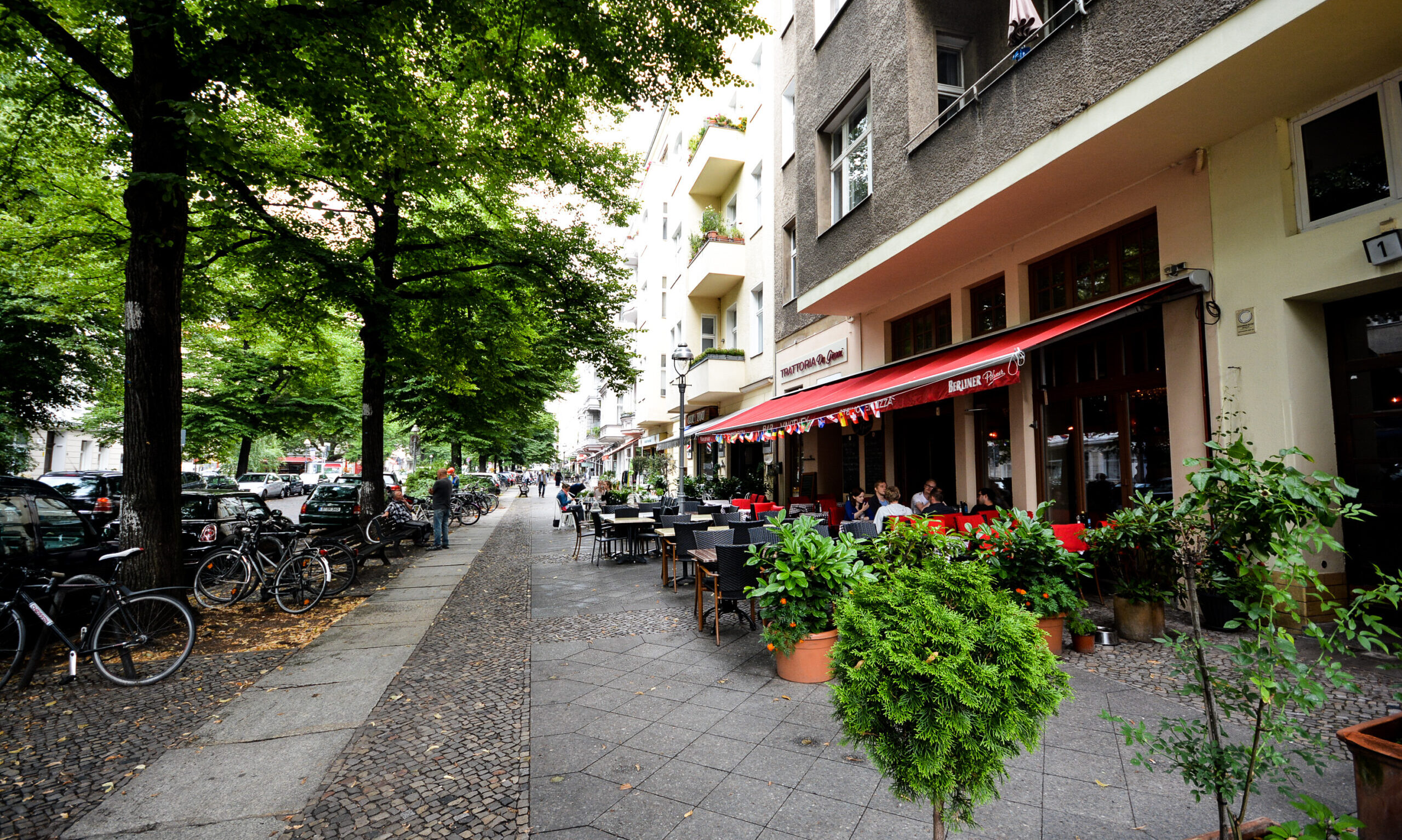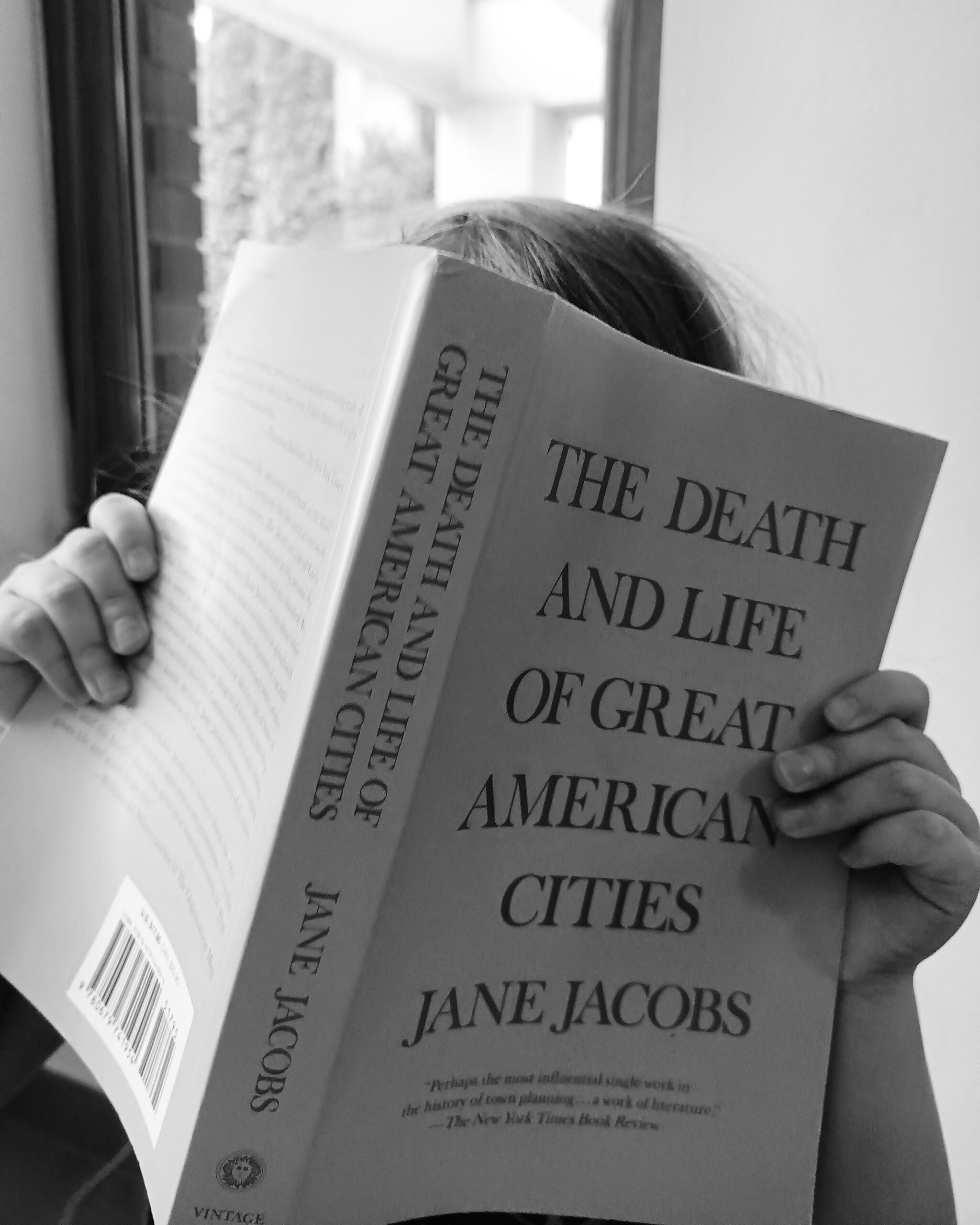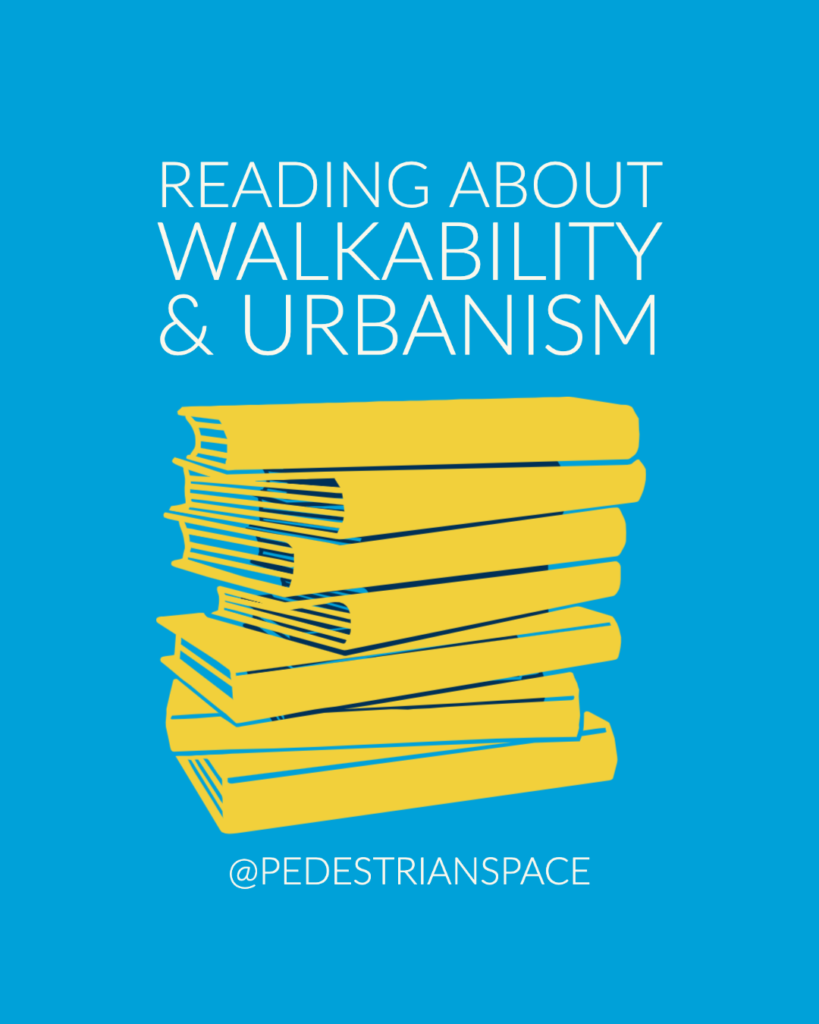
A round-up of books, papers, articles & other reading material related to multiple dimensions of walkability, sustainable urbanism, community health, built environment, urban planning, and related issues.
This list was established in February 2022 and is very much a work in progress! We are continuously updating with reading resources with a ‘progress over perfection’ mindset. If you have a recommendation for a resource to be added, please feel free to get in touch.
COMMUNITY & URBAN AGRICULTURE FOCUS:

Nordahl, Darrin (2009). Public Produce: The New Urban Agriculture. Island Press

The Classic USDA Farmers’ Bulletin Anthology on ‘Growing a Small-Scale City Vegetable Garde or Urban Farm’, U.S. Department of Agriculture Legacy Edition.
WALKABILITY & URBANISM FOCUS:
REGIONAL / NATIONAL / MUNICIPAL / ORGANIZATIONAL RESOURCES
ARUP (2016). Cities Alive: Towards a walking world.
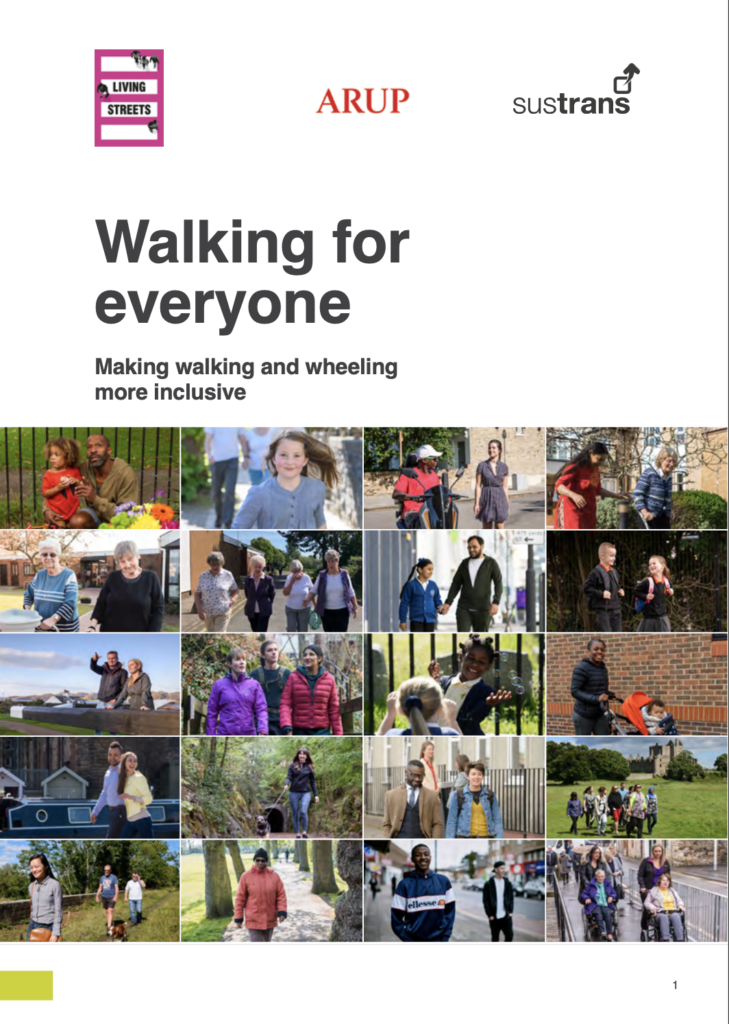
ARUP, Sustrans & Living Streets. Walking for everyone: Making walking and wheeling more inclusive & https://www.sustrans.org.uk/our-blog/research/all-themes/all/walking-for-everyone
DynaMo (February 2022). INSIGHTS INTO THE TRANSITION TOWARDS SUSTAINABLE URBAN MOBILITY: Providing a basis for discussion on the socio-technical transformation of urban passenger mobility for theory and practice.
European Commission, Directorate-General for Mobility and Transport
Planning For More Resilient and Robust Urban Mobility
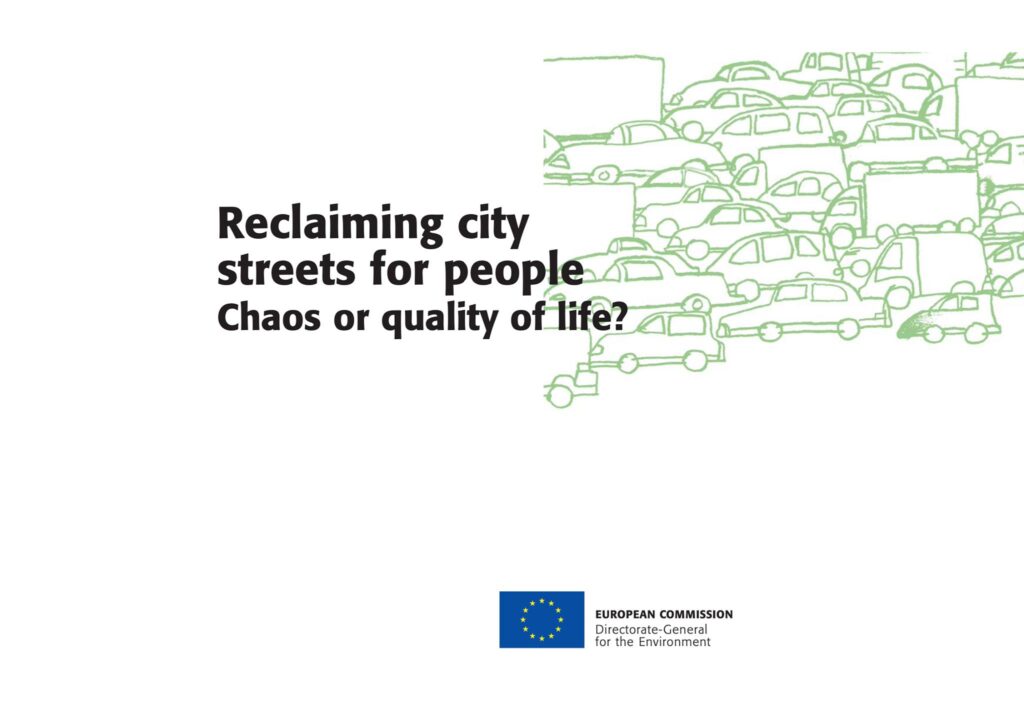
European Commission, Directorate-General for Environment (2004). Reclaiming City Streets for People: Chaos or Quality of Life? Office for Official Publications of the European Communities, Luxembourg.
The European Parliament (1989), The European Charter of Pedestrians’ Rights
L’Institut Paris Region (2022), Livable City, Walkable City
Interreg Danube Transnational Programme (2017), CityWalk Baseline Study
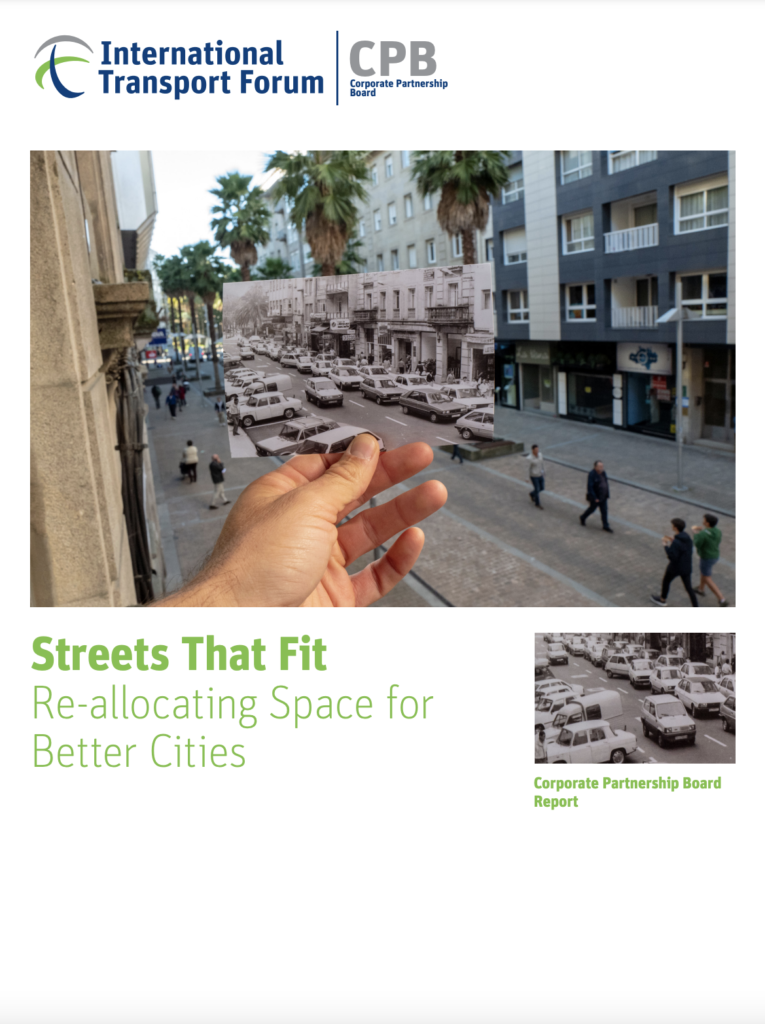
ITF (2022), Streets That Fit: Re-allocating Space for Better Cities, International Transport Forum Policy Papers, No. 100, OECD Publishing, Paris.
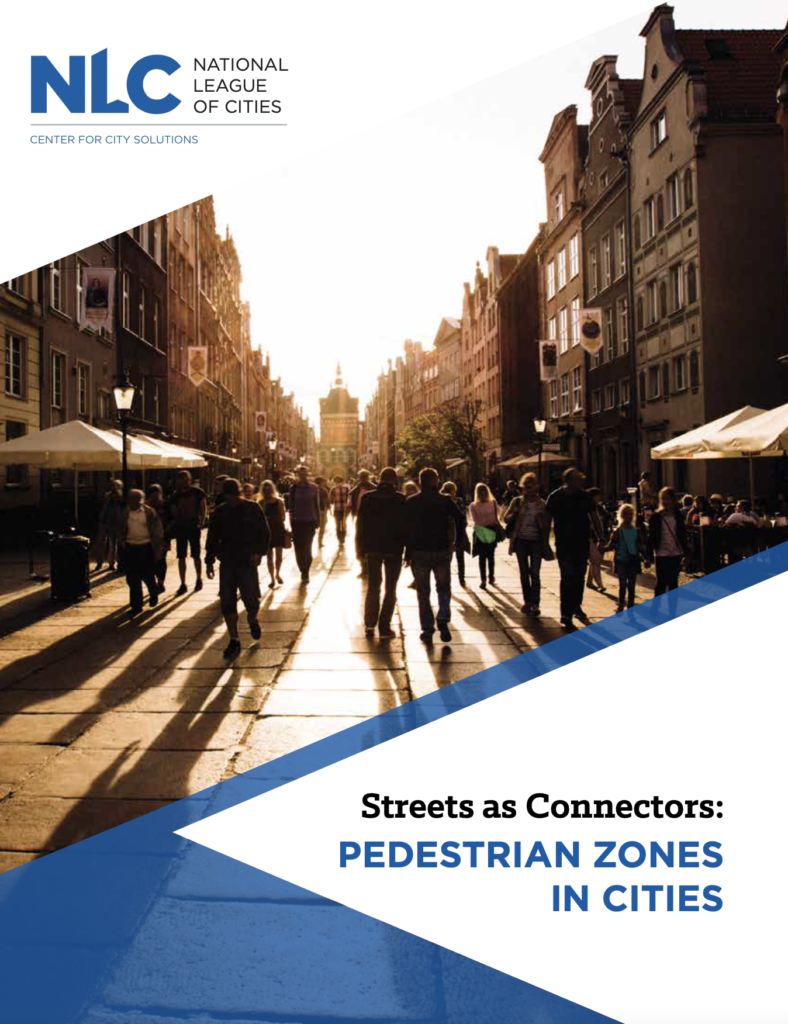
National League of Cities: Center for City Solutions (2020). Streets as Connectors: Pedestrian Zones in Cities. Washington, D.C.
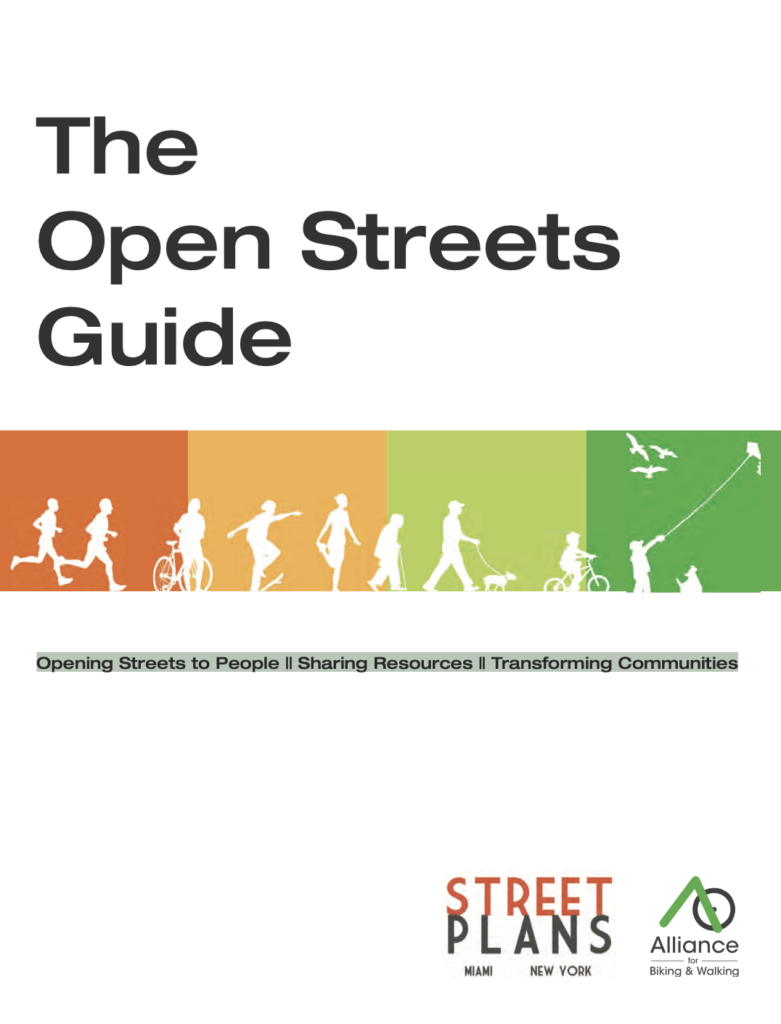
The Street Plans Collaborative & The Alliance for Biking & Walking (2012), Open Streets Guide: Opening Streets to People || Sharing Resources || Transforming Communities
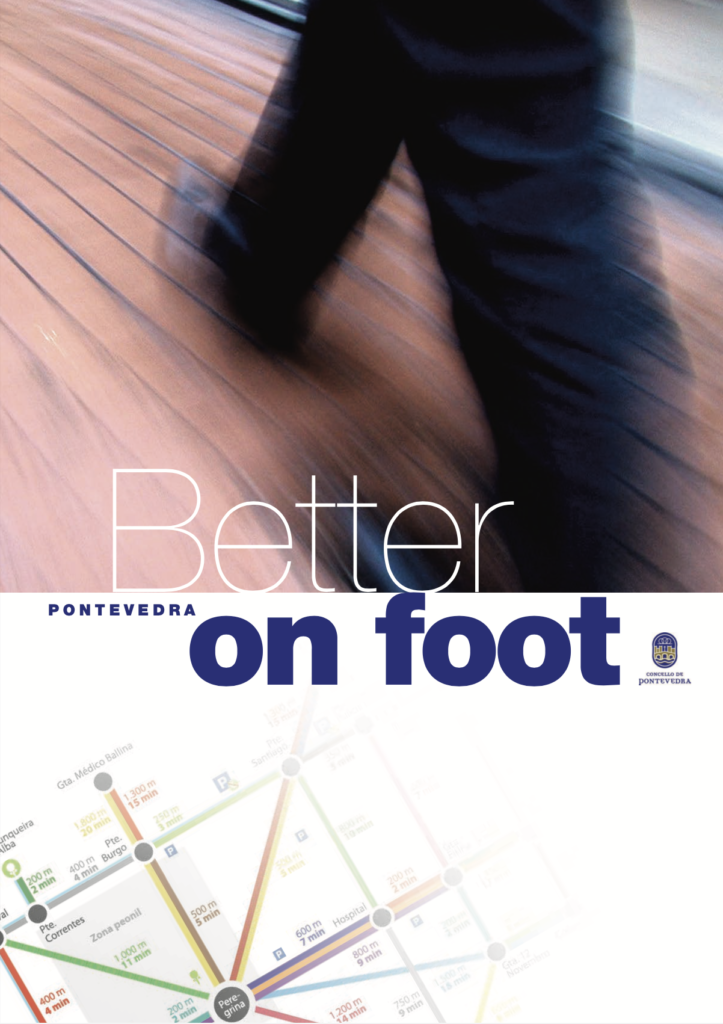
Pontevedra, Mayor’s Communications Department (2013). Better on Foot.
UN-Habitat & UNEP (2022). Walking and Cycling in Africa – Evidence and Good Practice to Inspire Action.
PAPERS & MEDIA ARTICLES
WALKABILITY: GENERAL
Annunziata, A. & Garau, C. (2020). A Literature Review on Walkability and its Theoretical Framework. Emerging Perspectives for Research Developments.
Askam, T. (2017). A study of walking and walkability through a spatial justice/spatial practice framework, in Maylands, Western Australia. https://ro.ecu.edu.au/theses/1966
Chaudhry, Z. (August 2022). The first two metres of a city. The Schumacher Institute.
Choudhury, S. (May 2020). Smart Pedestrian Net: How cities can “walk their way” into a better urban life. JPI Urban Europe.
Cysek-Pawlak, M. & Pabich, M. (2020). Walkability – the New Urbanism principle for urban regeneration. Journal of Urbanism: International Research on Placemaking and Urban Sustainability.
Dayal, S. (2022). Gurugram: Why inclusive footpaths are the way forward. Times of India.
Forsyth, Ann (2015). What is a walkable place? The walkability debate in urban design. Urban Design International 20, no.4: 274-292.
Kociuba, D. & Maj, M. (2020). Walkable city and universal design in theory and practice in Poland. Bulletin of Geography. Socio-economic Series.
Koo, J. (2017) Walkability and Connectivity: Planning for Enhancing Walkability and Connectivity. Landscape Architecture Series, University of Kentucky, College of Agriculture, Food and Environment.
Leinberger, Christopher B. (2007). Footloose and Fancy Free: A Field Survey of Walkable Urban Places in the Top 30 U.S. Metropolitan Areas. The Brookings Institution: Washington D.C.
Lindeke, B. (January 2023) Need a new year’s resolotion? Try walking. minnpost.com
Loo, B.P.Y (2021). Walking towards a happy city. Journal of Transport Geography, Volume 93, 103078.
Machado, R. (September 2022). Inclusive Spaces for a Permeable City. type.ie
Peters, Adele (2016). 50 Reasons Why Everyone Should Want More Walkable Streets. Fast Company.
Sirjani, A. & Szabo, A. (2021). Perceiving Liveability through the Diverse Aspects of Walkability. Periodica Polytechnica Architecture: Budapest.
Speck. J. You Gave Me Your Word: How Good City Planning Became Walkability. America Walks.
Turoń K. , Czech P. , Juzek M. (2017). The concept of a walkable city as an alternative form of urban mobility. Science notebooks, Transport / Silesian University of Technology.
Winkless, L. (August 2021). Walk This Way: Why Pedestrians Hold The Key To Sustainable Cities. Forbes.
Wright, Steve (April 2022.) In Praise of the Humble Sidewalk: Nine experts on why accessible sidewalks are the best infrastructure investment communities can make. APA Planning Magazine.
15-MINUTE CITY // 20 MINUTE NEIGHBORHOOD
C40 Cities. 15-Minute Cities: Debunking the Myths.
C40 Knowledge (July 2020). How to build back better with a 15-minute city.
EIT Urban Mobility (November 2022). Urban Mobility Next 9: 15-Minute City: Human-centered planning in action.
Girgaonkar, P. (September 2020). Time to step back in time and reclaim our ’15-minute cities’. The Free Press Journal.
Gongadze, S. and Maassen, A. (January 2023) Paris’ Vision for a ‘15-Minute City’ Sparks a Global Movement. World Resources Institute.
Grabar, H. (January 2023). Is the tiny little neighborhood the city of the future? The Guardian.
Hill, A. (April 2023). 15-minute cities versus tinfoil hat wearers: only one winner in this fight. ITS International.
Mance, H. (March 2023). Paris mayor Anne Hidalgo: ‘A city’s creativity doesn’t depend on cars. That’s the 20th century’. Financial Times.
Moreno, C., Gall, C., Chabaud, D., Garnier, M., Illian, M., et al. The 15-minute City model : An innovative approach to measuring the quality of life in urban settings 30-minute territory model in low-density areas WHITE PAPER N°3. IAE Paris – Université Paris 1 Panthéon-Sorbonne. 2023, pp.EAN EAN 9782492794001
Ordaz, A. , Oliveres, V. , Cristina G. Bolinches, C., Caballero, F. (February 2023) El mapa de la ciudad de los 15 minutos en España: el 90% de los hogares tiene cerca colegios y hospitales, pero seguimos lejos del trabajo // The map of the 15-minute city in Spain: 90% of homes are close to schools and hospitals, but we are still far from work. Eldiario.es.
Razemon, O., Koch, M., Costil, M. Pasquier, m, Lopez, J. and Davidenkoff, E. (September 2022). How pedestrians invade cities / Original: Comment les piétons investissent les villes. Le Monde.
Sethi, P. (April 2023). Climate of Conspiracy: How 15-minute cities became a conspiratorial talking point. Logically Facts.
Steuteville, R. (January 2023). Low-income people need ‘15-minute cities’ the most. Public Square: A CNU Journal
Sustrans. What is a 20-minute neighborhood?
Wainwright, O. (February 2023) You can live a healthier, happier life in a 15-minute city. The Guardian.
Winkless, L. (September 2022). The 15 Minute City: What They Are And How to Build Them. Forbes.
ACCESSIBILITY
Wright, S. (January 2023). Pete Buttigieg Wants to Make Transit Accessible — And Pay for It, Too. American Planning Association.
BIOPHILIC URBANISM & GREEN CITIES
Beatley, T. Excerpt from Imagining Biophilic Cities.
Brown, P. (September 2023). Parks and Gardens hold key to cooling overheated cities. The Guardian.
Duckworth, A. Video: Walkability through Biophilic Design
Fisher, A. (December 2021). Grassroots rebels: meet the ‘biophilics’ who are busy greening our cities. The Guardian.
Henley, J. (January 2023) ‘We need trees’: green vision struggles to take root in Europe’s cities. The Guardian.
Konijnendijk, C. Promoting health and well-being through urban forests – Introducing the 3-30-300 rule.
Mehaffy, Michael W., and Nikos Angelos Salingaros. “Ch 12. Biophilia.” In Design for a Living Planet: Settlement, Science, & the Human Future, 131-137. DFLAP. Levellers/Sustasis Press and Vajra Publications, 2015.
O’Sullivan, Feargus (November 2021). Europe’s Greenest Cities Might Not Be the Ones You Think: A new study ranking access to green space in more than 1,000 European cities finds some unexpected winners and losers. Bloomberg City Lab.
Neeser, T. (2019). Biophilic Urbanism: Redefining Walkability in the Urban Core. University of Washington.
How Green Space Fosters Safer Communities: 5 questions with researchers Mardelle Shepley and Naomi Sachs. Reimagining the Civic Commons.
Simon, M. (September 2022). It’s Time to Make Cities More Rural: Enough with the urban vs. rural binary. When rurbanization brings agriculture into cities, everyone benefits. WIRED.
Tayseer, M. and Millan, L. (August 2023). Fast-Growing Mini Forests Help Cool Down a Desert City. Bloomberg.
Natural Walking Cities (September 2019) Walkable Cities are Green Cities: How walkability is reinforced by natural urban infrastructure.
World Resources Institute. Better Forests, Better Cities.
CAR DEPENDENCE & CAR-FREE
Aichinger, W. (2021). Liberty, mobility, urbanity: Why cities are about more than car freedom and how the federal, state and local governments can promote change (Original: Liberté, mobilité, urbanité-Warum es in den Städten um mehr geht als um Autofreiheit und wie Bund, Länder und Kommunen den Wandel voranbringen können).
Amrich, M. (June 2020). Could Europe’s Car-Free Zones Become Long-Term Solutions? A Look at Three Cities’ Efforts. Triple Pundit.
Buehler, Ralph; Pucher, John; Gerike, Regine & Götschi, Thomas (2017). Reducing car dependence in the heart of Europe: lessons from Germany, Austria, and Switzerland. Transport Reviews, 37:1, 4-28.
Casas M. // World Economic Forum, The Surprising Benefits of Taking Cars off Our City Streets. EcoWatch.
Cyca, M. (April 2023). Drivers vs. Everybody. The Walrus.
Gordon, D. (April 2023). We Can Have It All: Shorter Commutes, Less Traffic. Why Aren’t We Doing It? The New Republic.
Ferenczi, Alex (October 2021). A City Without Cars Is Already Here, and It’s Idyllic: Ljubljana. VICE
Kuper, S. (February 2023). The urban ideal is a 19th-century city with 21st-century enhancements. Financial Times.
Mays, L. (September 2022). Why urban streets around the world are going car-free. CNBC.
Monbiot, George (7 March 2019). Cars are killing us. Within 10 years, we must phase them out. The Guardian.
Norton, P. When Cities Treated Cars as Dangerous Intruders. The MIT Press Reader.
Nicholas, Kimberly (2022). 12 best ways to get cars out of cities – ranked by new research. The Conversation.
Oltermann, P. (February 2023). Berlin’s plan for a car-free city prompts bitter war of words. The Guardian.
Pojani, D. (November 2022). The challenge for ‘chauffeur mums’: navigating a city that wasn’t planned for women. The Guardian.
Peters, A. (January 2020). Here are 11 more cities that have joined the car-free revolution. Fast Company.
Schmitt, Angie. (February 2023) How to go car-free — or car-light — in Middle America: A guide to going without four wheels, even if you don’t live in NYC. Vox.
Snell, S. A Connected, Walkable City: Building for Urban Wildlife. Planetizen.
ART
Sama, S. (2022). Notes on Walking: Dandelion has no Field
CLIMATE CHANGE, ENVIRONMENT & EMISSIONS REDUCTION
Bronsdon, C. (March 2021). Electric Cars Won’t Solve Climate Change. Planetizen.
Girardet, H.(2013). Towards the Regenerative City. Expert Commission on Cities and Climate Change of the World Future Council (Hamburg, Germany)
Hahn, J. (January 2022). European Commission prioritises cyclists and pedestrians in cities for “first time in history”.
Dezeen. Olson, E. (October 2022). The Climate Change Contradiction. The Climate Change Review.
¨Naimoli, S. & Wilcox, B. (March 2023). 5 Shifts to Transform Transportation Systems and Meet Climate Goals. World Resources Institute.
Pierre-Louis, K. (May 2023). Better Bus Systems Could Slow Climate Change. Scientific American.
United Nations (28 February 2022), Secretary-General’s video message to the Press Conference Launch of IPCC Report
ECONOMY
Planner, S.J. (October 2022). Emphasizing Walkability on Commercial Streets Increase Revenue for Merchants. Viewpoint Vancouver.
Transform Scotland (2021). Open for Business: Gaining business support for transforming city centres.
Transport for London (2018). Getting more people walking and cycling could help save our high streets.
Strong Towns Podcast. Walkable City Design is Critical for Economic Health.
von Schneidemesser, D., Betzien, J. (2021 online): Local Business Perception vs. Mobility Behavior of Shoppers: A Survey from Berlin. – Transport Findings.
Yoshimura, Yuji; Kumakoshi, Yusuke; Fan, Yichun; Milardo, Sebastiano; Koizumi, Hideki; Santi, Paolo; Arias, Juan Murillo; Zheng, Siqi; Ratti, Carlo (2022). Street pedestrianization in urban districts: Economic impacts in Spanish cities. Cities, Volume 120.
EQUITY & MOBILITY
ITDP (2022). Exploring the Intersection of Race and Mobility in Brazil
ITDP (Institute for Transportation & Development Policy) (2022). Access for All: Access and Babies, Toddlers, and Their Caregivers
Schmitt, A. (January 2023). The Right to Mobility. Planetizen.
Stratford, Elaine (2019). What walking the city streets might tell us about spatial justice and democracy. Geography Directions.
Weinreich, Marianne (2021). Are Mobility Systems Gender Neutral – Gender and (Smart) Mobility: Green paper. Ramboll: Denmark.
HEALTH: PUBLIC / MENTAL / PHYSICAL / EMOTIONAL
Blackstock, E. (August 2022). Feeling Lonely? Your Car-Centric Town Might Be Why: Urban planning has long prioritized vehicles over humans. Jalopnik.
Columbia University’s Mailman School of Public Health (February 2023) Neighborhood walkability linked to risk of gestational diabetes.
‘Fielding, A. (May 2023). The walking cure: why we should all be putting one foot in front of the other. The Guardian.
Glazener, A., Wylie, J., van Waas, W. et al. The Impacts of Car-Free Days and Events on the Environment and Human Health. Curr Envir Health Rpt (2022).
Hunt, E. (2018). Walkable cities reduce blood pressure and hypertension risk, study finds. The Guardian.
Iravani, H. & Rao, V. (2020). The effects of New Urbanism on public health, Journal of Urban Design, 25:2, 218-235.
Koo, J. (2017). Walkability and Connectivity: Assessing and Planning for Healthier Community Environments. University of Kentucky.
Leyden, K., Hogan, M., D’Arcy, L., Bunting, B. & Bierema, S. (2023). Walkable Neighborhoods: Linkages Between Place, Health, and Happiness in Younger and Older Adults, Journal of the American Planning Association.
McCarthy, A. (March 2023). Whatever the Problem, It’s Probably Solved by Walking. The New York Times.
Poon, L. (February 2023). To Build a Healthier City, Begin at the Sidewalk. Bloomberg City Lab.
Tran, M. (2016). Healthy cities — walkability as a component of health-promoting urban planning and design. Journal of Sustainable Urbanization, Planning and Progress.
Woodcock, J., Edwards, P., Tonne, C., Armstrong, B. G., Ashiru, O., Banister, D., Beevers, S., Chalabi, Z., Chowdhury, Z., Cohen, A., Franco, O. H., Haines, A., Hickman, R., Lindsay, G., Mittal, I., Mohan, D., Tiwari, G., Woodward, A., & Roberts, I. (2009). Public health benefits of strategies to reduce greenhouse-gas emissions: urban land transport. Lancet (London, England).
MEDIA & ENGAGEMENT
Stalls, J. and Lundkvist, A. (2022). 12 Days of Pedestrian Advocacy Tips
Von Puttkamer, L. (2019). How Media Supports Participatory Urban Planning – Evidence from Hamburg, Cape Town and Mexico City. The Urban Media Lab.
PANDEMIC
Holland, B. (2020). Coronavirus has exposed the fragility of auto-centric cities. Rocky Mountain Institute
Sabino, L. and Uchôa, L. // SampaPé (2021). Can the Pandemic Situation Generate Walkable Cities?
Sadik-Khan, J. and Solomonow, S. (September 2020). We must rethink our streets to create the six-foot city. The Guardian.
PLACE ATTACHMENT
Hiles, J. (October 2021). Living like a Tourist. Strong Towns.
PSYCHOLOGY & WELL-BEING
PUBLIC SPACE
UN-Habitat (2022). Global Public Space Programme Annual Report.
PUBLIC TRANSPORTATION
Bettati, A., Luca Milani, L., Federica Pozzato, F., and Sandri, N. (February 2022). Fostering an inclusive urban transit system. McKinsey & Company.
Bliss, L. (August 2017) Older People Will Need Much Better Transit. CityLab, Bloomberg.
Block, D. (February 2023). Free Public Transportation Accelerates in Some US Cities. VOA news.
Downs, A. (January 2002). Can Transit Tame Sprawl. Brookings.
Hawkins, A. (November 2021). Public transportation can save the world- if we let it. The Verge.
Nikore, M. and Natasha, S. (February 2023) How to create women-friendly public transport in cities in India.
Stone, E. (February 2023). Why Free Public Transit is Also Climate Justice For Many Angelenos. LAist.
Transit Center (2016), Who’s On Board 2016: What Today’s Riders Teach Us About Transit That Works
World Bank Group (2019). Pedestrian Mobility for Urban Growth : Walking and its Links to Transportation.
SAFETY
Boardman, C. (January 2022). Walking and cycling must be made safe in England. Here’s our plan to do just that. The Guardian.
Zipper, D. (2022). The Incredibly Obvious Way to Reduce Road Deaths That Goes Ignored. Slate.
SCHOOL & PLAY STREETS
City of Paris, School Streets in Paris
SOCIAL CONNECTIVITY & CULTURE
Boyce, C. (2010). Walkability, Social Inclusion and Social Isolation and Street Redesign. Built Environment (1978-), 36(4), 461-473.
Leyden, K. M. (September 2003). Social Capital and the Built Environment: The Importance of Walkable Neighborhoods. American Journal of Public Health, Vol 93, No. 9.
Rainwater, B. & Rivett, B. (March 11, 2020) How Car-Free Streets Can Combat Loneliness. U.S. News
Rogers, S.H., K.H. Gardner, C.H. Carlson, Social Capital and Walkability as Social Aspects of Sustainability. Sustainability 2013, 5, 1-x manuscripts; doi:10.3390/su50x000x.
Rogers, S. H., Halstead, J. M., Gardner, K. H., & Carlson, C. H. (2010). Examining walkability and social capital as indicators of quality of life at the municipal and neighborhood scales. Applied Research in Quality of Life, 6(2), 201–213.
Steuteville, R. (August 2021). Ten social benefits of walkable places: We shape our cities and then they shape us. Congress for the New Urbanism.
Whybrow, P. & Bramley, G. & Brown, C. (2021). ‘It’s just one of those natural progressions’: Stories of relocating to neighborhoods of high and low walkability. Health & Place, Volume 69.
SUSTAINABLE URBANISM
Tomer, A. & George, C. (June 2023). Building for proximity: The role of activity centers in reducing total miles traveled. Brookings Metro.
Jaegerhaus, W. (2022). What’s the Matter with American Cities? Common Edge.
Steffen, A. (2017). Ecovillage vs. Greenwich Village: A Way forward for Truly Sustainable Cities.
URBAN HEAT
Azhar, A. (June 2022). From the Middle East to East Baltimore, a Johns Hopkins Professor Works to Make the City More Climate-Resilient. Inside Climate News.
Desai, A. (June 2022). This may be the coolest summer. Be ready for 51 degrees C. Question of Cities.
EPA, Heat Island Impacts.
EPA, Reduce Urban Heat Island Effect.
Simon, M. (April 2022). Extreme Heat Is a Disease for Cities. Treat It That Way, WIRED.
Tong S, Prior J, McGregor G, Shi X, Kinney P. (2021). Urban heat: an increasing threat to global health BMJ 2021.
https://www.bmj.com/content/bmj/375/bmj.n2467.full.pdf
World Economic Forum ( 2022). Discover how sweltering urban heat islands are being cooled down.
World Economic Fourm (2022). This is how small green spaces can help keep cities cool during heatwaves.
PODCASTS
The War on Cars, The Pedestrian
BOOKS
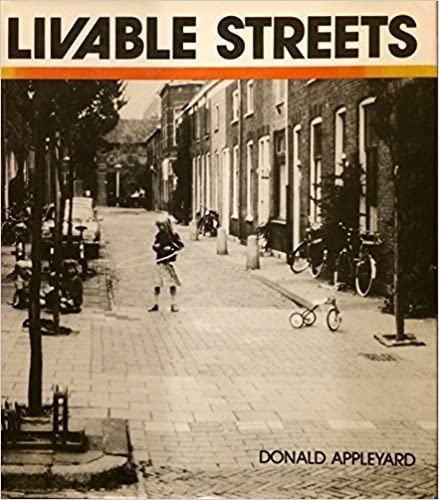
Appleyard, Don (1982) Livable Streets. University of California Press: Berkeley.
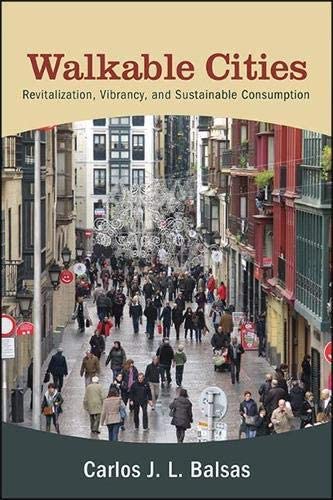
Balsas, Carlos J.L. (2019). Walkable Cities: Revitalization, Vibrancy and Sustainable Consumption. SUNY Press: Albany.
Bosselmann, Peter (2008) Urban Transformation-Understanding City Form and Design. Island Press: Washington D.C.
Bruntlett, Melissa & Chris (2021). Curbing Traffic: The Human Case for Fewer Cars in Our Lives. Island Press: Washington D.C.
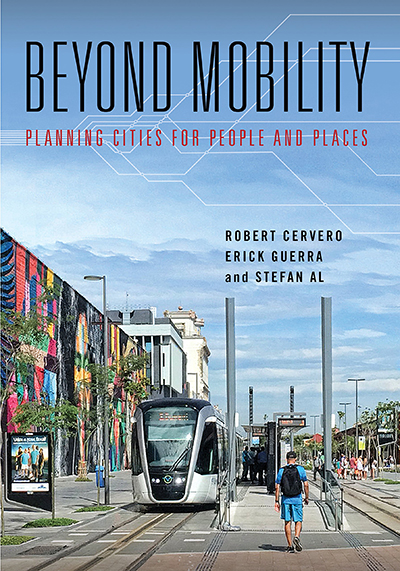
Cervero, Robert, Guerra, Erick & Al, Stefan (2018). Beyond Mobility: Planning Cities for People and Places. Island Press: Washington, D.C.
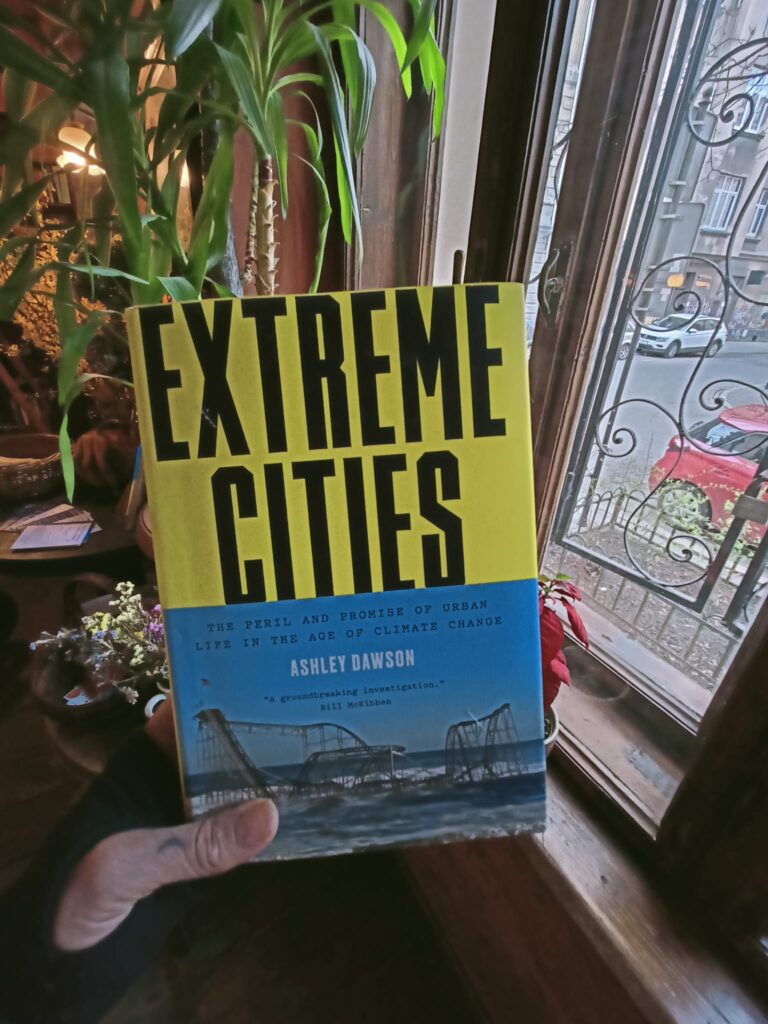
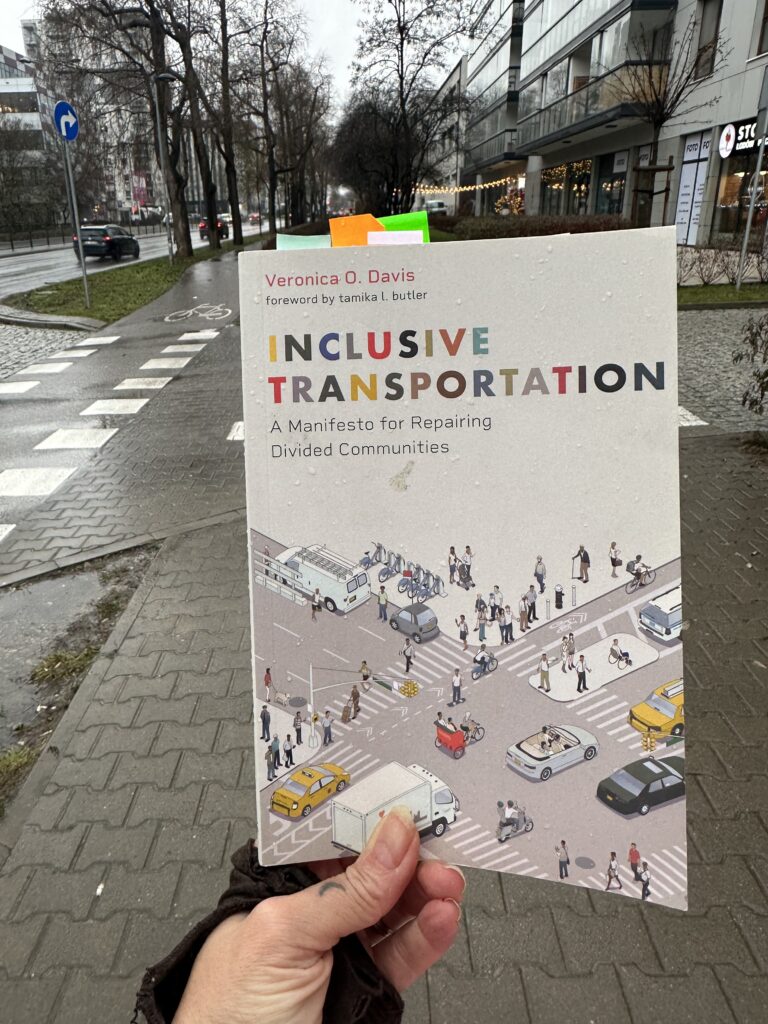
Davis, Veronica (2023). Inclusive Transportation: A Manifesto for Repairing Divided Communities. Island Press.
Dawson, Ashley (2017). Extreme Cities: The Peril and Promise of Urban Life in the Age of Climate Change. Verso Books.
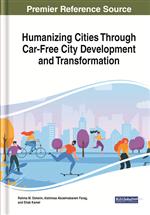
Doheim, Rahma, Aboelmakarem, Alshimaa & Kamel, Ehab (eds). (2020). Humanizing Cities Through Car-Free City Development and Transformation. IGI Global: Hershey, Pennsylvania.
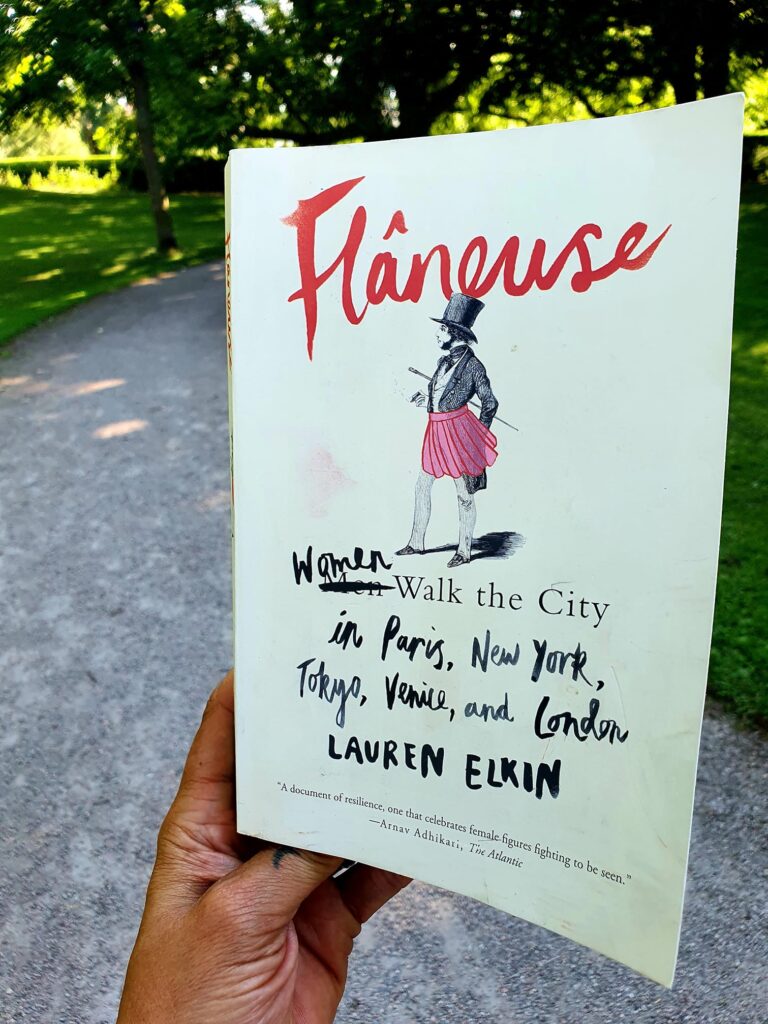
Elkin, Lauren (2016). Flâneuse: Women Walk the City in Paris, New York, Tokyo, Venice and London. Chatto & Windus: London.
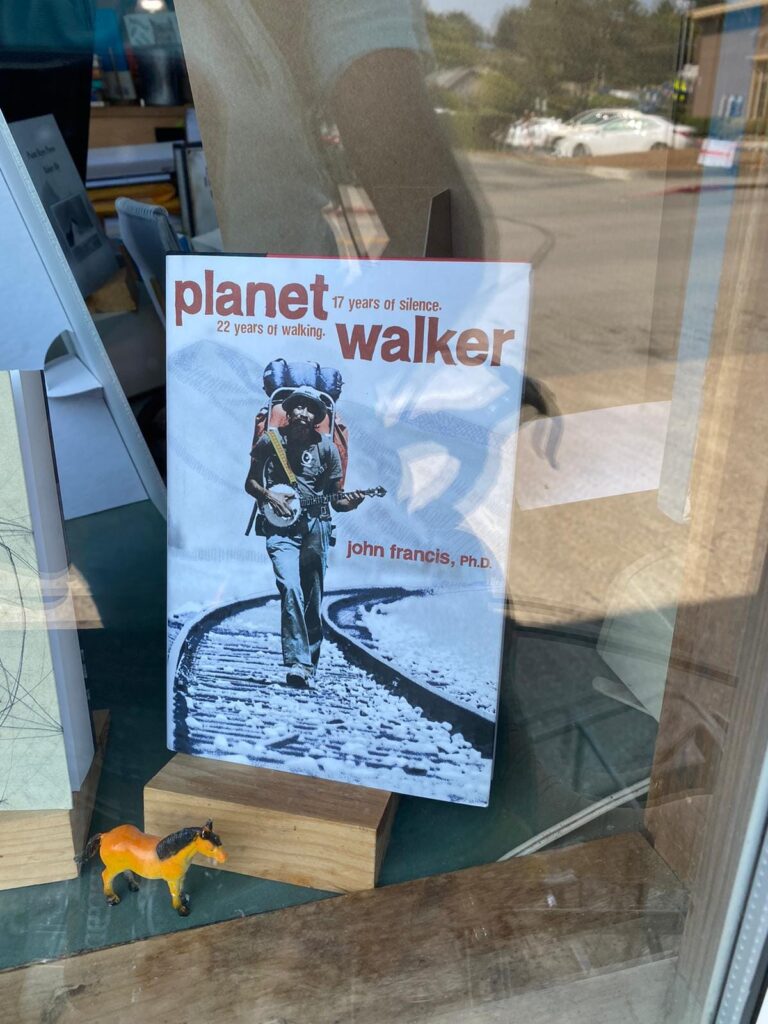
Francis Ph.D., John (2009). Planetwalker: 22 Years of Walking. 17 Years of Silence. National Geographic.
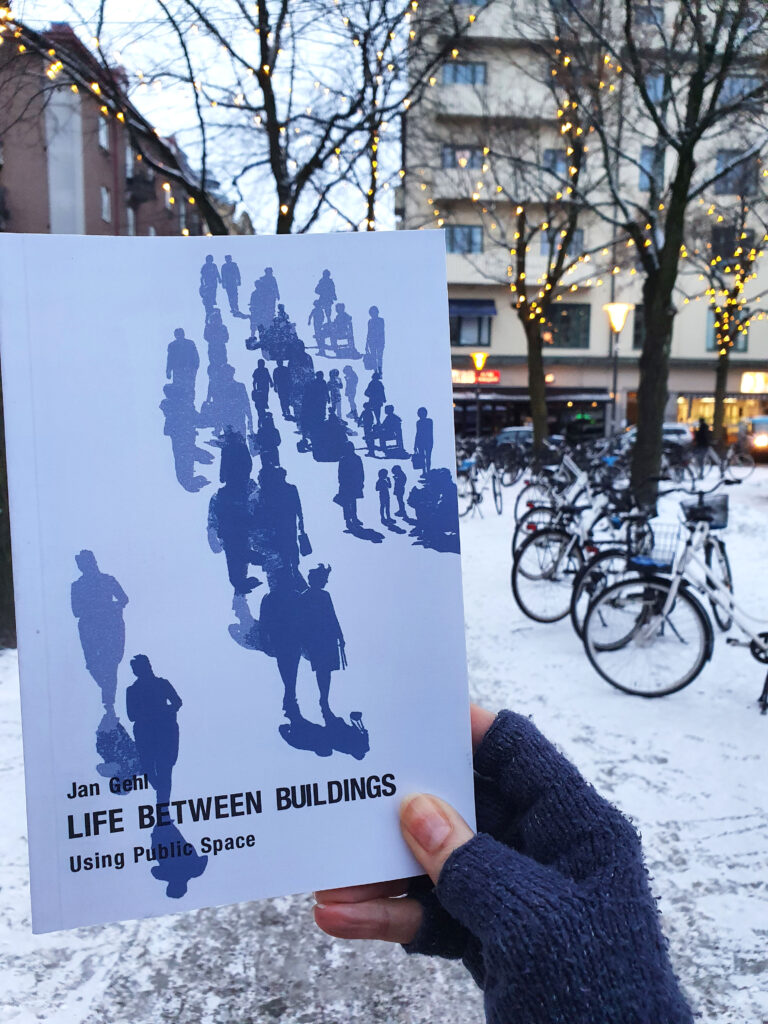
Gehl, Jan (2006). Life between Buildings: Using Public Space (Sixth edition), The Danish Architectural Press, Copenhagen.
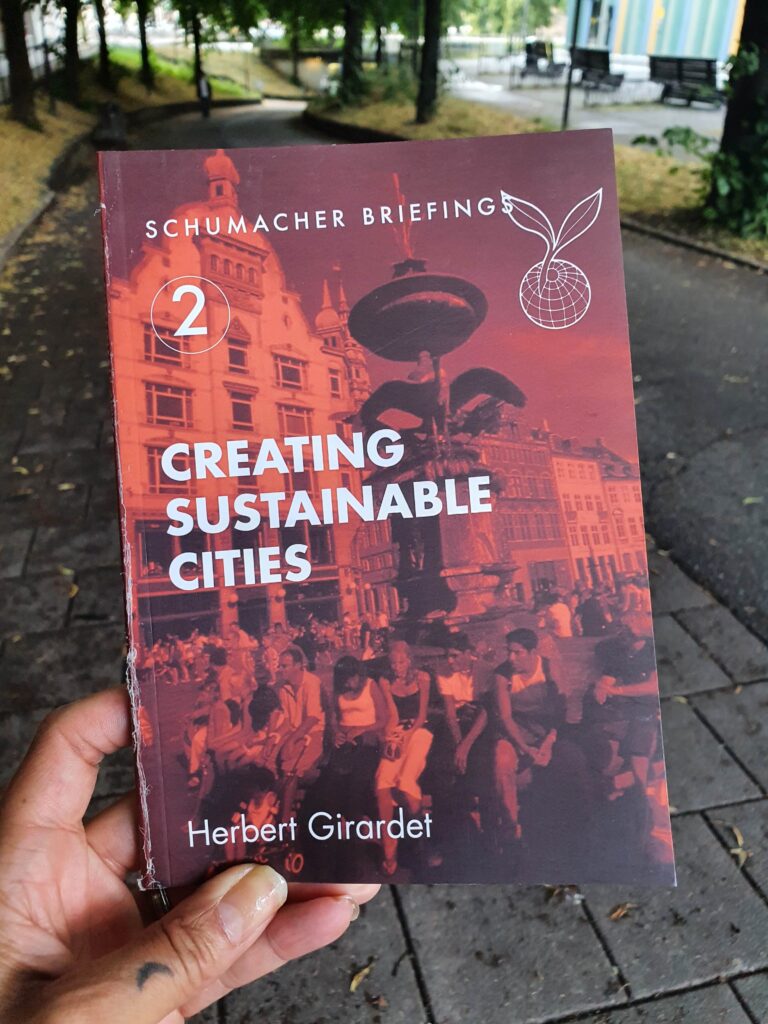
Girardet, Herbert (1999) Creating Sustainable Cities (Schumacher Briefing), Green Books, UK.
Grescoe, Taras (2012). Straphanger: Saving Our Cities and Ourselves from the Automobile. Harper Perennial, New York.
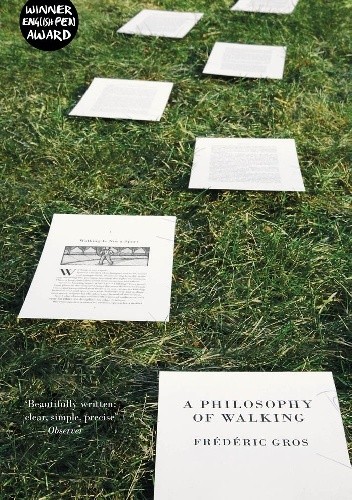
Gros, Frédéric (2014) A Philosophy of Walking. Verso Books: London
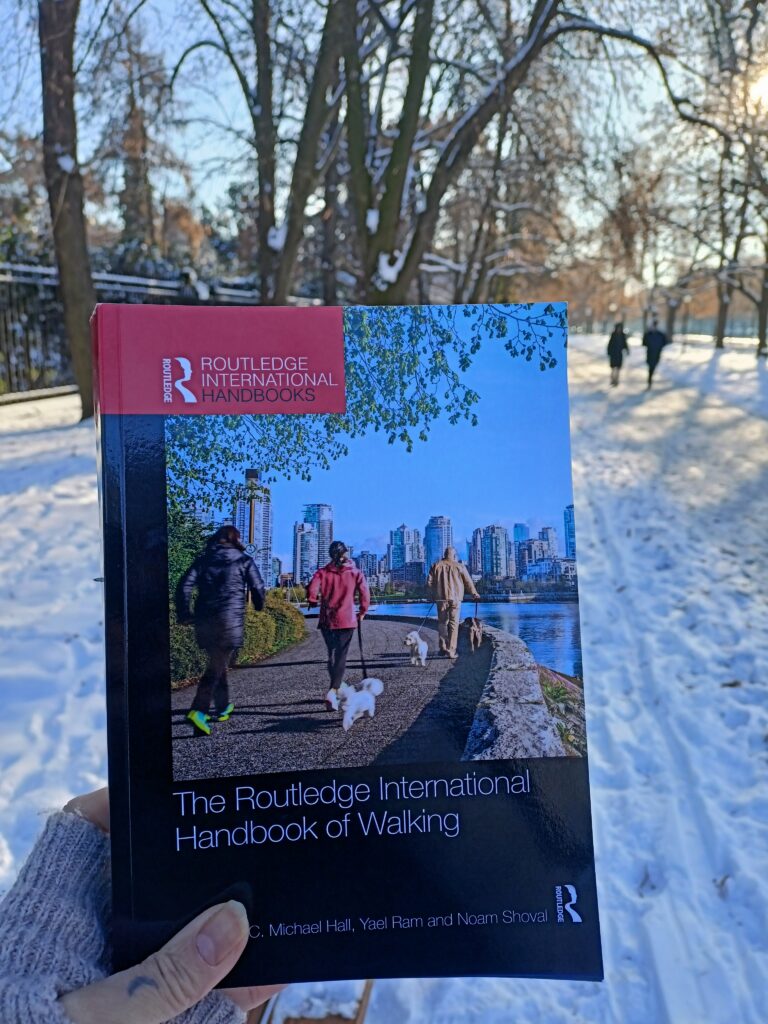
Hall, Michael C., Ram, Yael & Shoval, Noam (eds). (2017) The Routledge International Handbook of Walking. Routledge: Oxfordshire.
Horowitz, Alexandra (2014), On Looking: A Walker’s Guide to the Art of Observation. Scribner, New York.
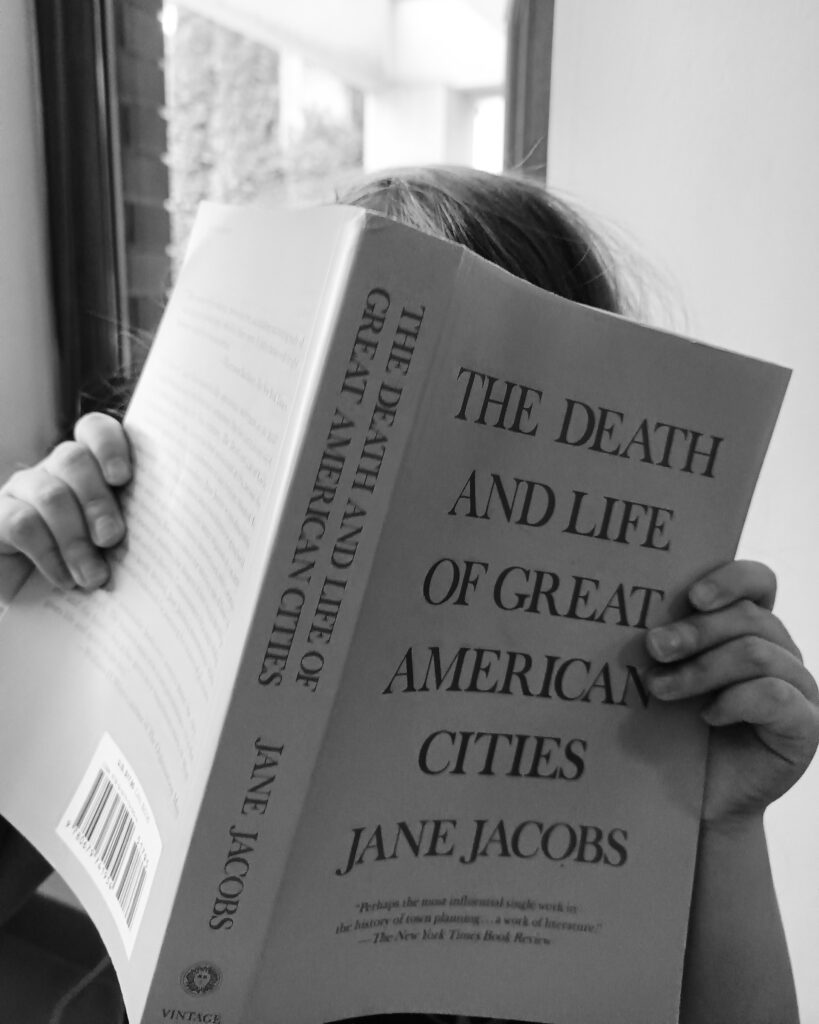
Jacobs, Jane (1961). The Death and Life of Great American Cities. Random House: New York.
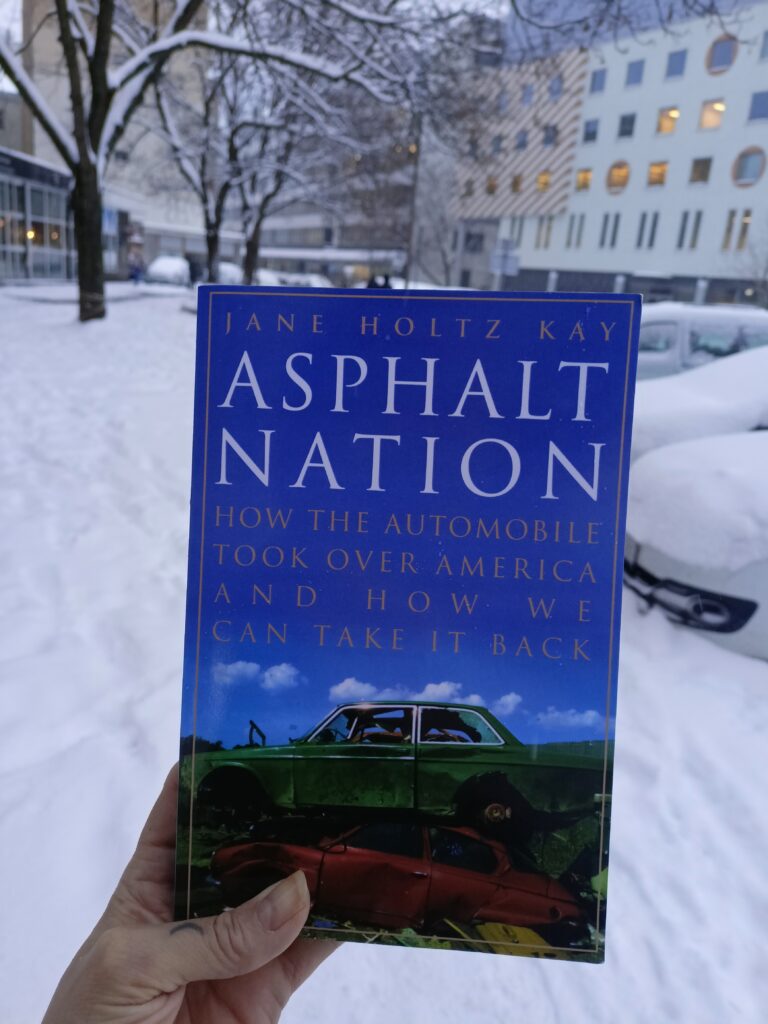
Kay, Jane Holtz (1997), Asphalt Nation: How the Automobile Took Over America and How We Can Take it Back. University of California Press: Berkley
Lerner, Jaime (2003). Urban Acupuncture. Washington DC: Island Press.
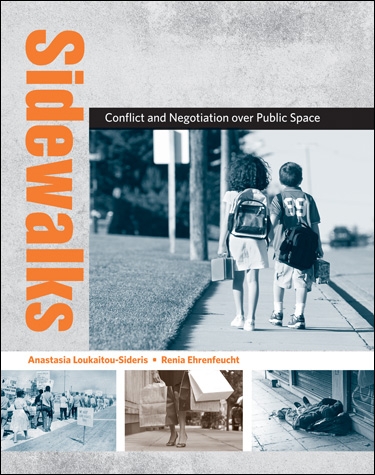
Loukaitou-Sideris, Anastasia & Ehrenfeucht, Renia (2012). Sidewalks: Conflict and Negotiation Over Public Space. MIT Press: Cambridge.
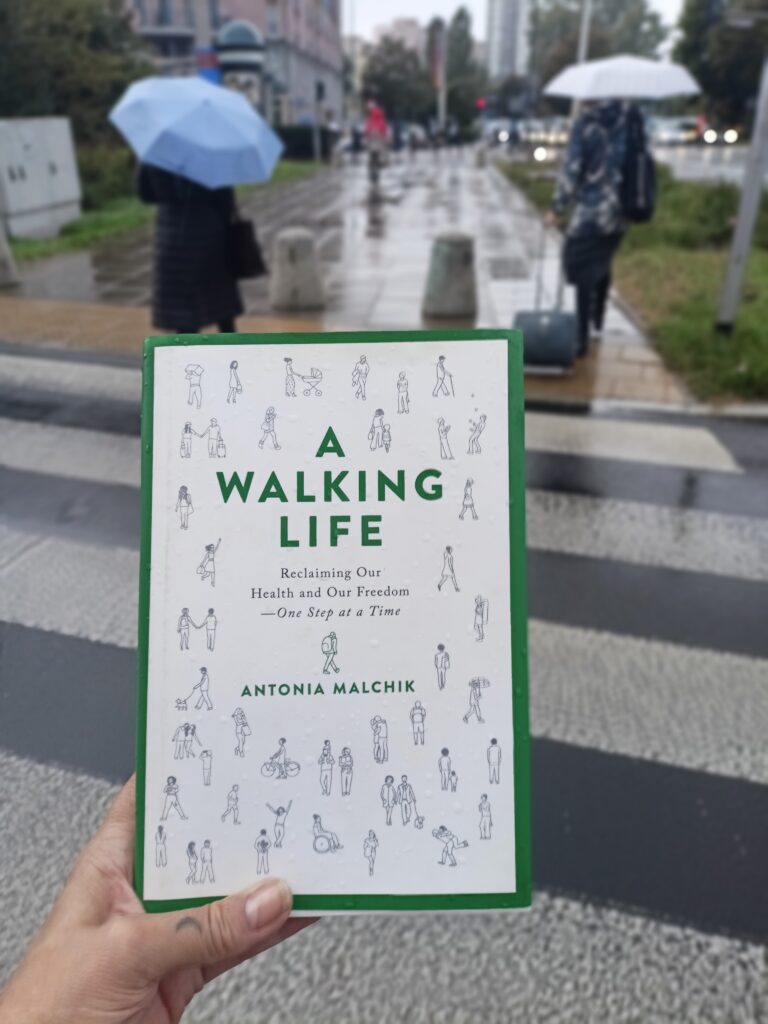
Malchik, Antonia (2019). A Walking Life: Reclaiming Our Health and Our Freedom One Step at a Time. Da Capo Lifelong Books, Cambridge, MA.
Marx, P. (2022). Road to Nowhere: What Silicon Valley Gets Wrong about the Future of Transportation. Verso Books: London.
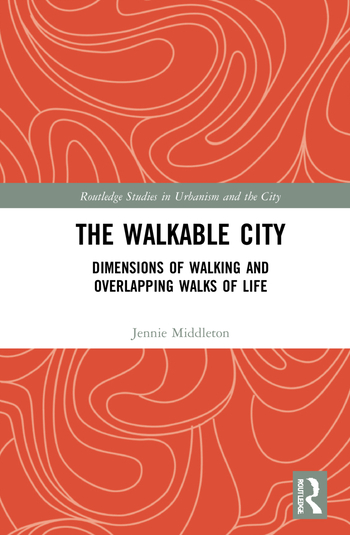
Middleton, Jennie (2021). The Walkable City: Dimensions of Walking and Overlapping Walks of Life. Routledge: Oxfordshire.
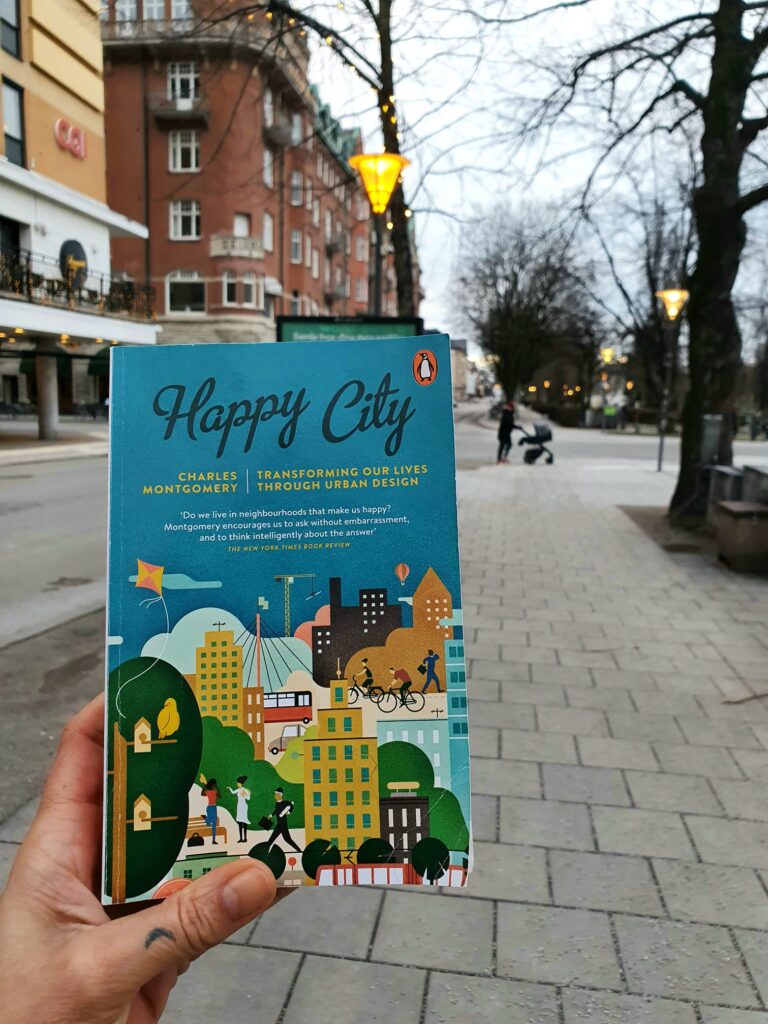
Montgomery, Charles (2015) Happy City: Transforming Our Lives Through Urban Design. Penguin Books: London
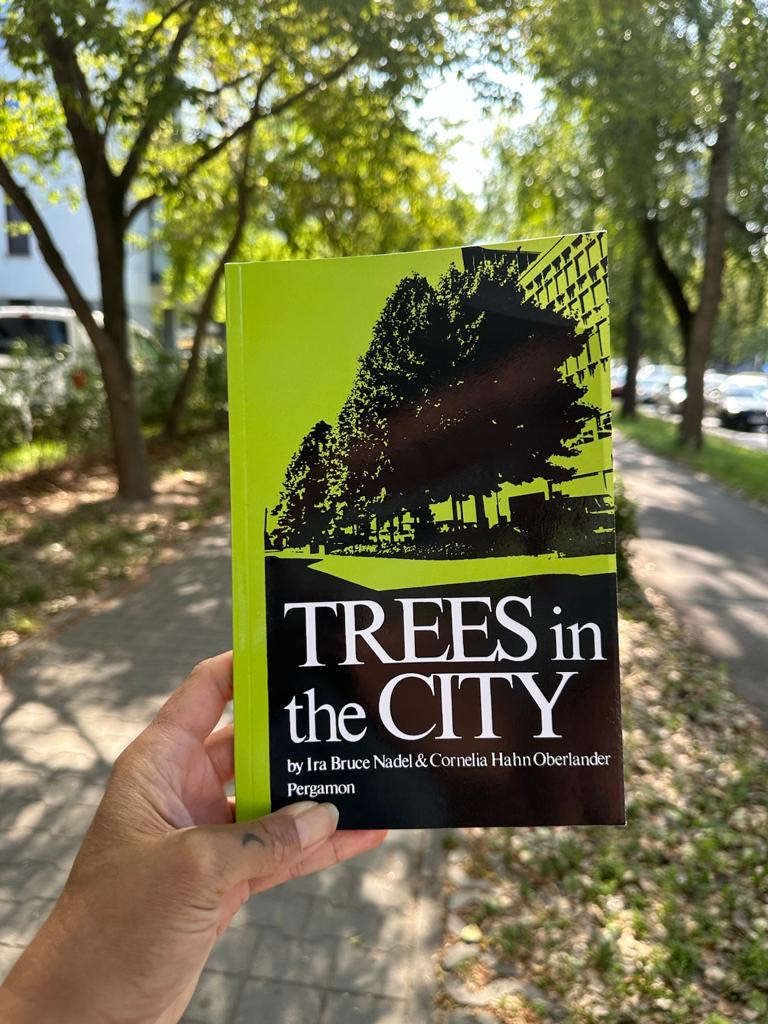
Nadel, I. & Oberlander, C. (1977). TREES in the CITY. Pergamon Press.
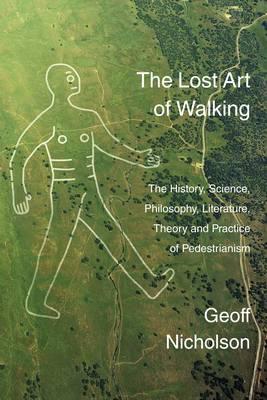
Nicholson, Geoff (2008) The Lost Art of Walking: The History, Science, Philosophy, and Literature of Pedestrianism. Riverhead Books: New York.
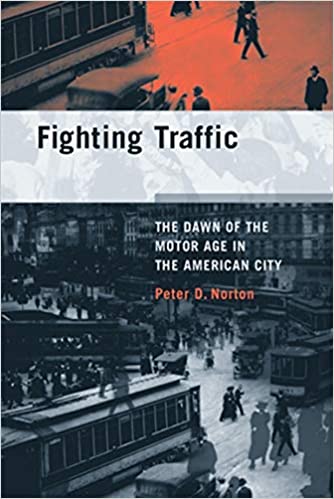
Norton, Peter D. (2011). Fighting Traffic: The Dawn of the Motor Age in the American City. MIT Press: Cambridge.
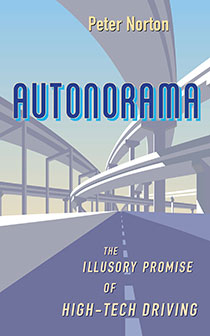
Norton, Peter (2021.) Autonorama. The Illusory Promise of High-Tech Driving. Island Press: Washington D.C.
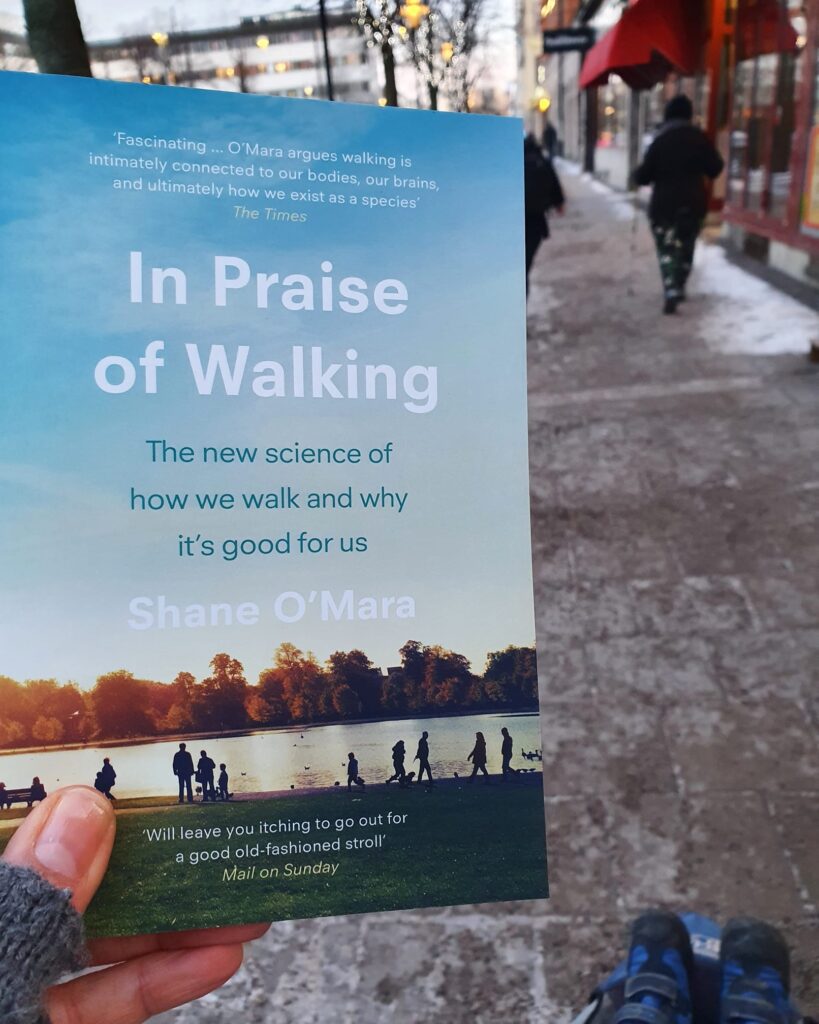
O’Mara, Shane (2019). In Praise of Walking: The new science of how we walk and why it’s good for us. Penguin/Vintage: London
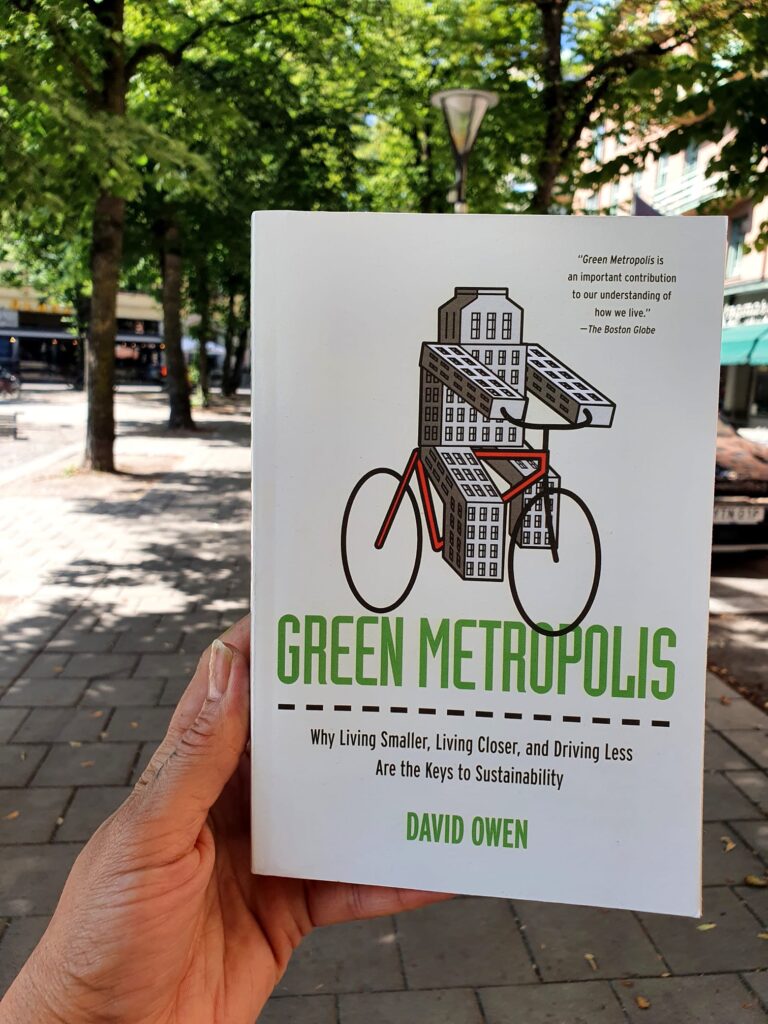
Owen, David (2009) Green Metropolis: Why Living Smaller, Living Closer, and Driving Less Are the Keys to Sustainability. Riverhead Books: New York.
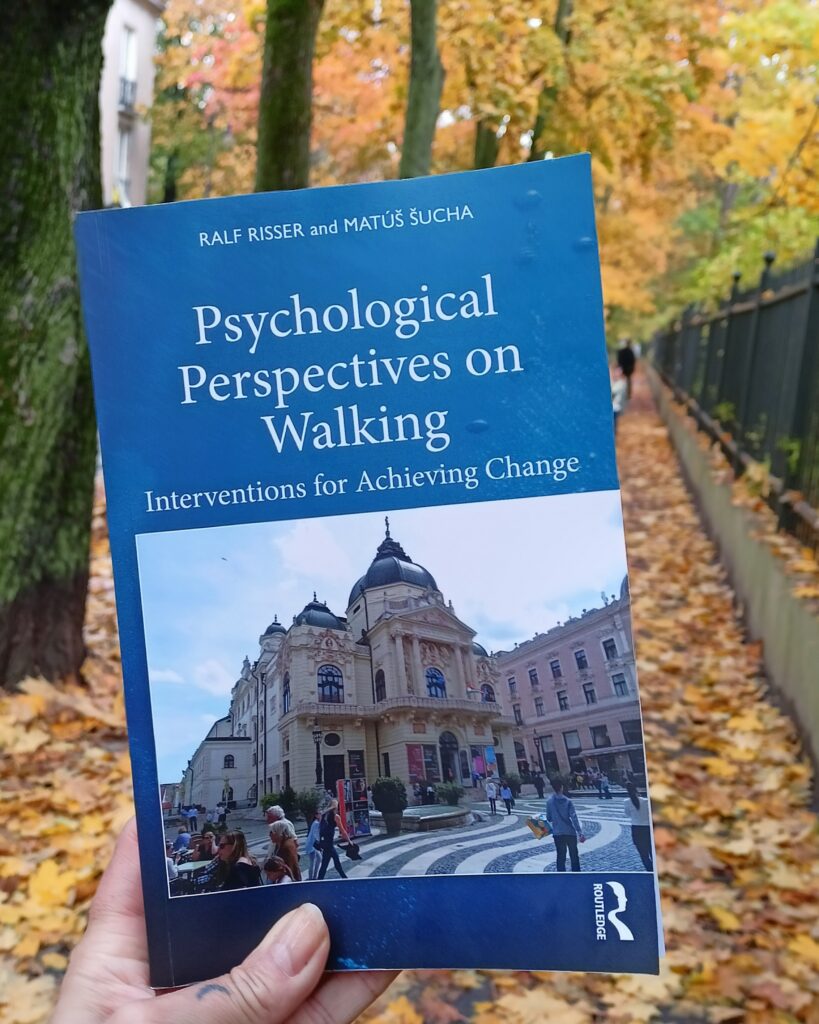
Risser, R. and Šucha, M. (2021) Psychological Perspectives on Walking: Interventions for Achieving Change. Routledge.
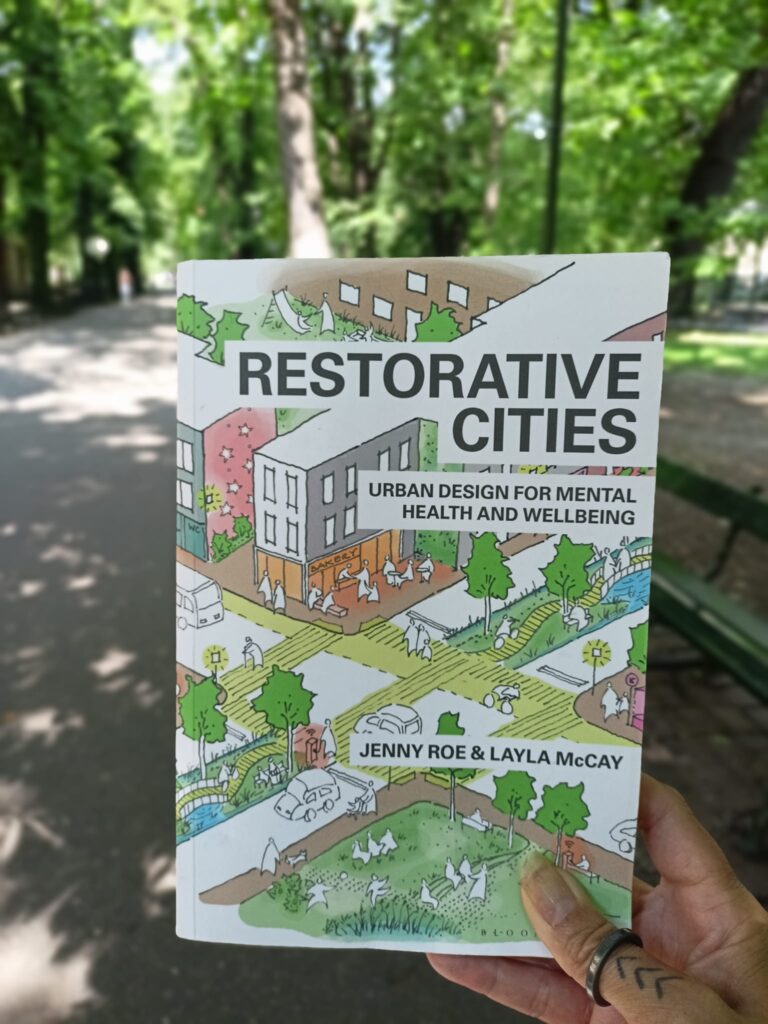
Roe, Jenny and McCay, Layla (2021). Restorative Cities: Urban Design for Mental Health and Wellbeing. Bloomsbury Publishing: London.
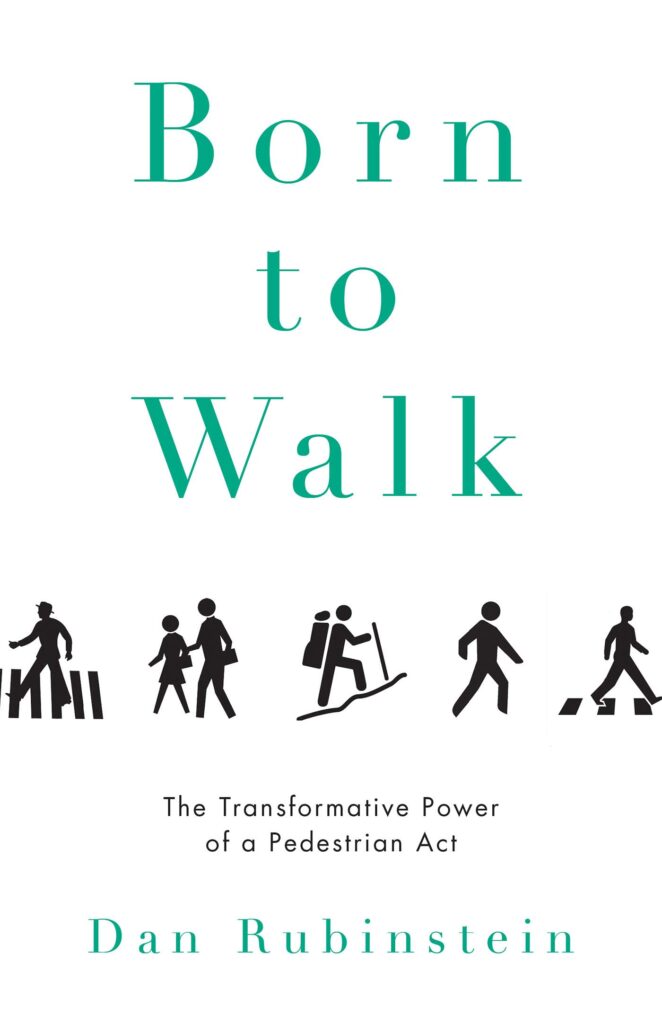
Rubinstein, Dan (2015) Born to Walk: The Transformative Power of a Pedestrian Act. ECW Press: Toronto.
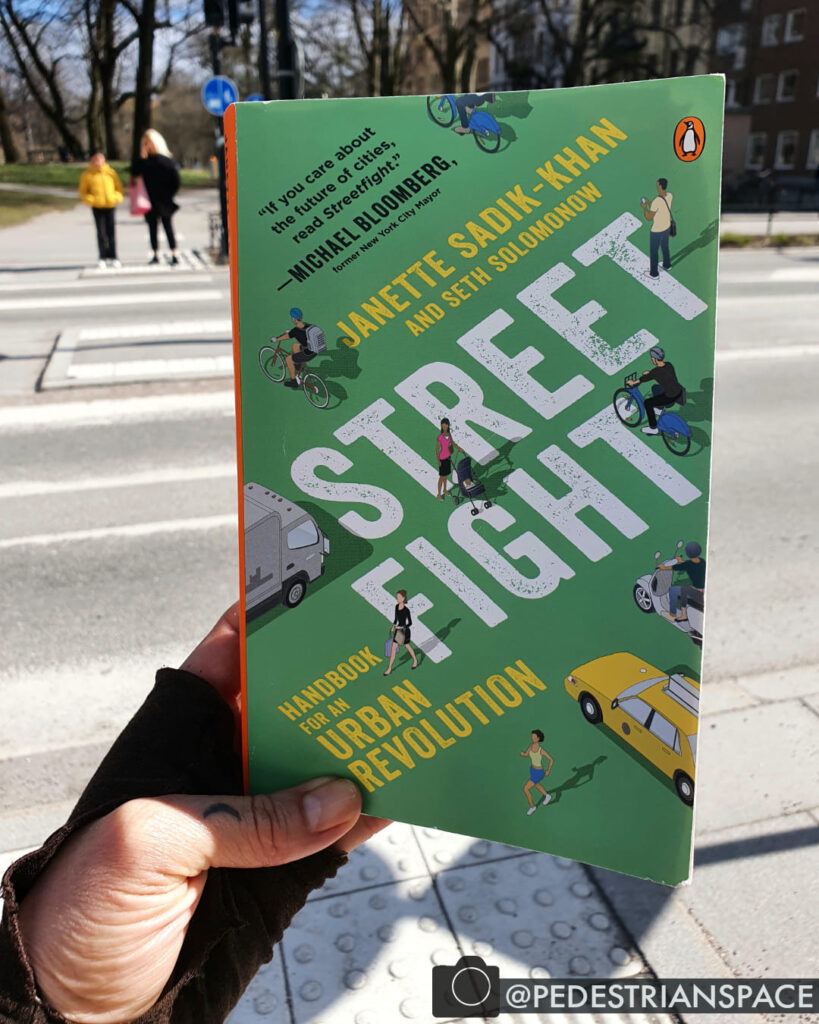
Sadik-Khan, Janet & Solomon, Seth (2016). Streetfight: Handbook for an Urban Revolution. Penguin Books: New York.
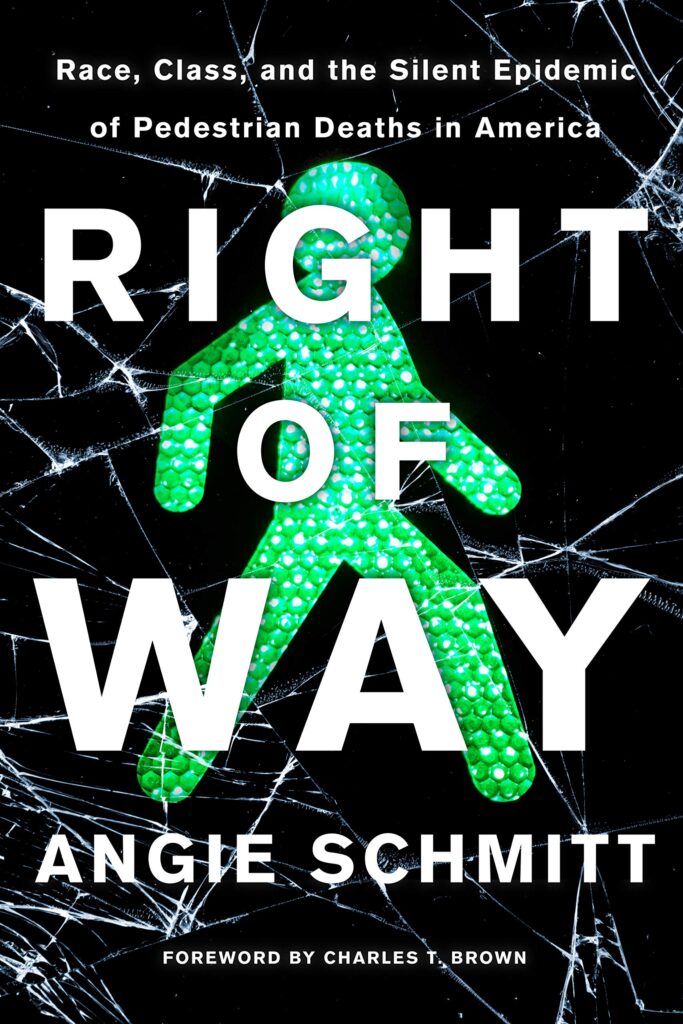
Schmitt, Angie (2020). Right of Way: Race, Class, and the Silent Epidemic of Pedestrian Deaths in America. Island Press, Washington D.C.
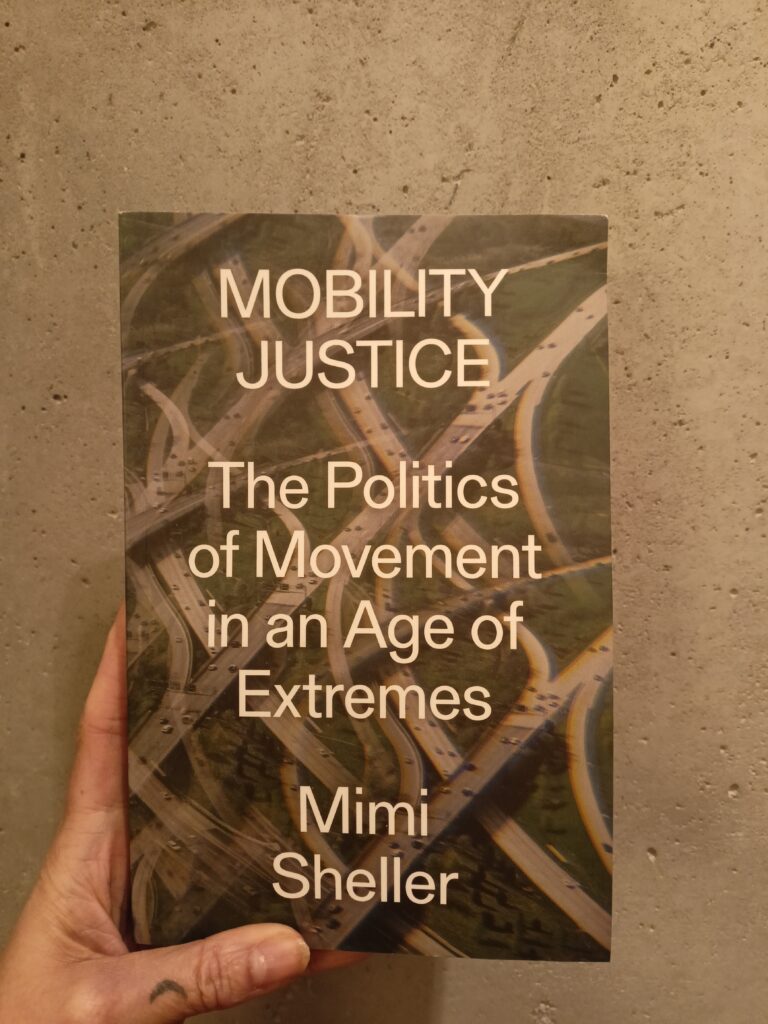
Sheller, Mimi (2018). Mobility Justice: The Politics of Movement in an Age of Extremes. Verso Books: London.
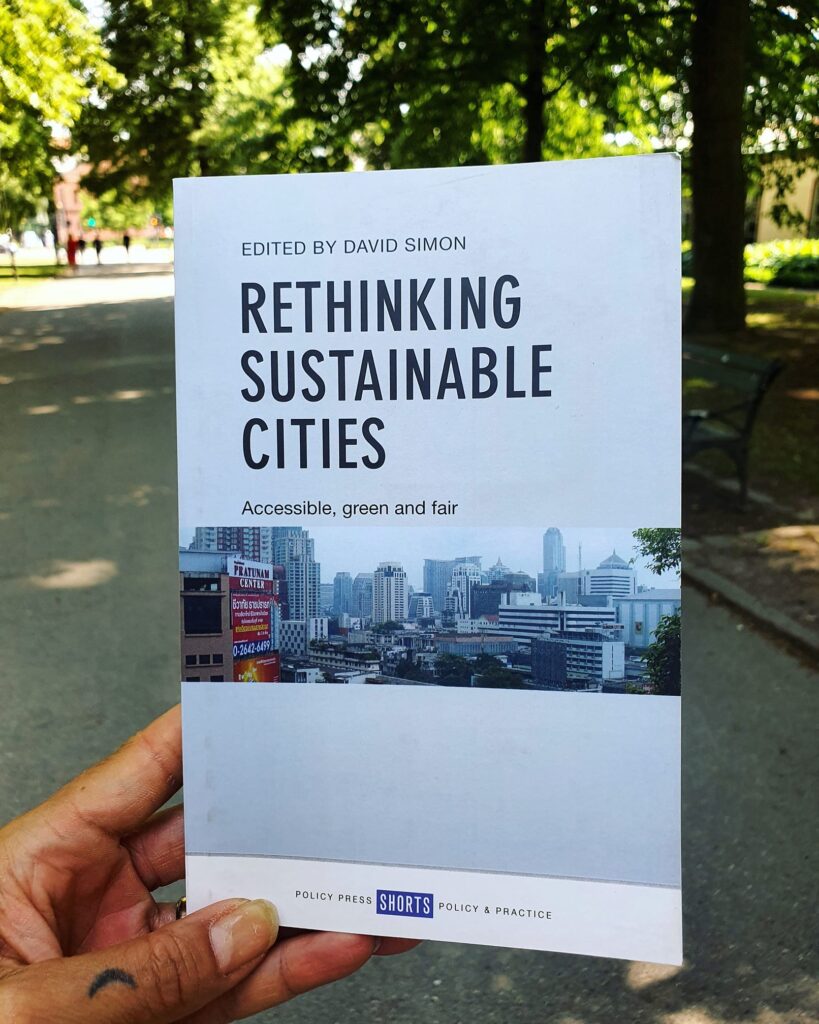
Simon, David (ed). (2016). Rethinking Sustainable Cities: Accessible, green and fair. Policy Press: Bristol.
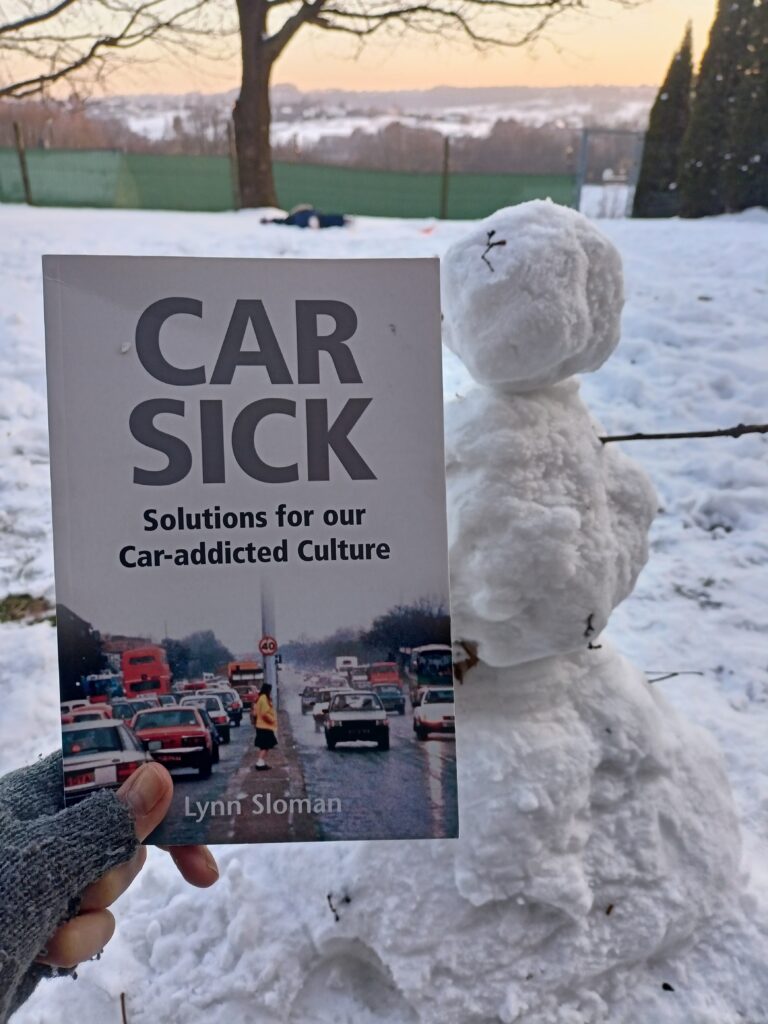
Sloman, Lynn (2006). Car Sick: Solutions for Our Car-addicted Culture. Green Books: Cambridge, UK.
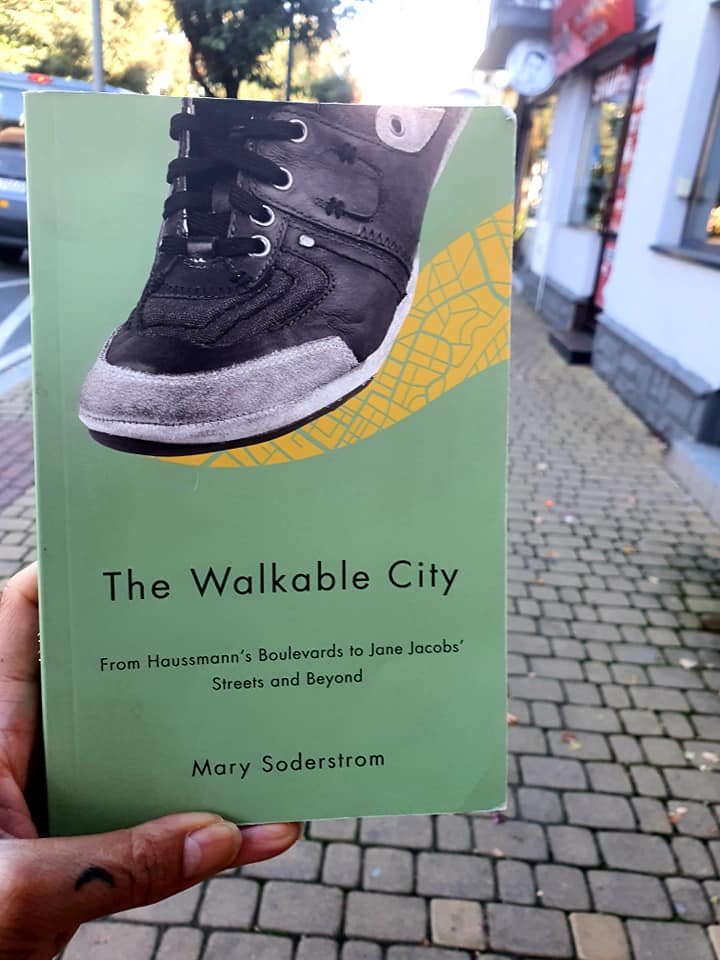
Soderstrom, Mary (2009). The Walkable City: From Hausmann’s Boulevards to Jane Jacobs’ Stress and Beyond. Véhicule Press, Montreal.
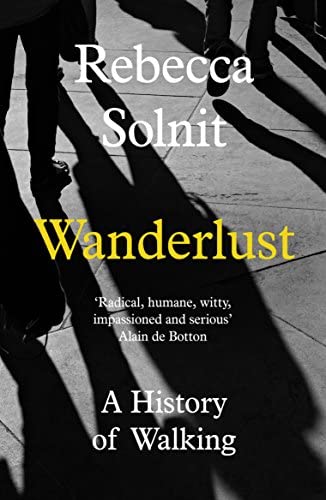
Solnit, Rebecca (2001). Wanderlust: A History of Walking. Granta Publications: London.
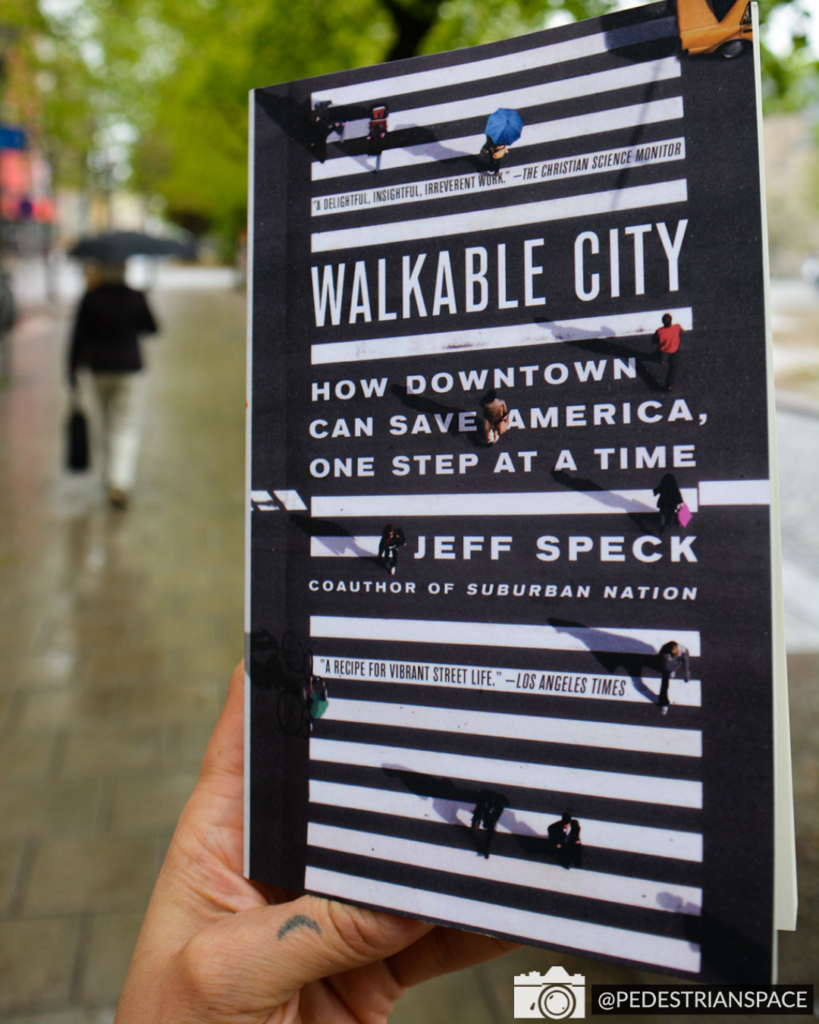
Speck, Jeff (2012). Walkable City: How Downtown Can Save America. Farrar, Strous and Giroux: New York.
Speck, Jeff (2018) Walkable City Rules: 101 Steps to Making Better Places. Island Press: Washington D.C.
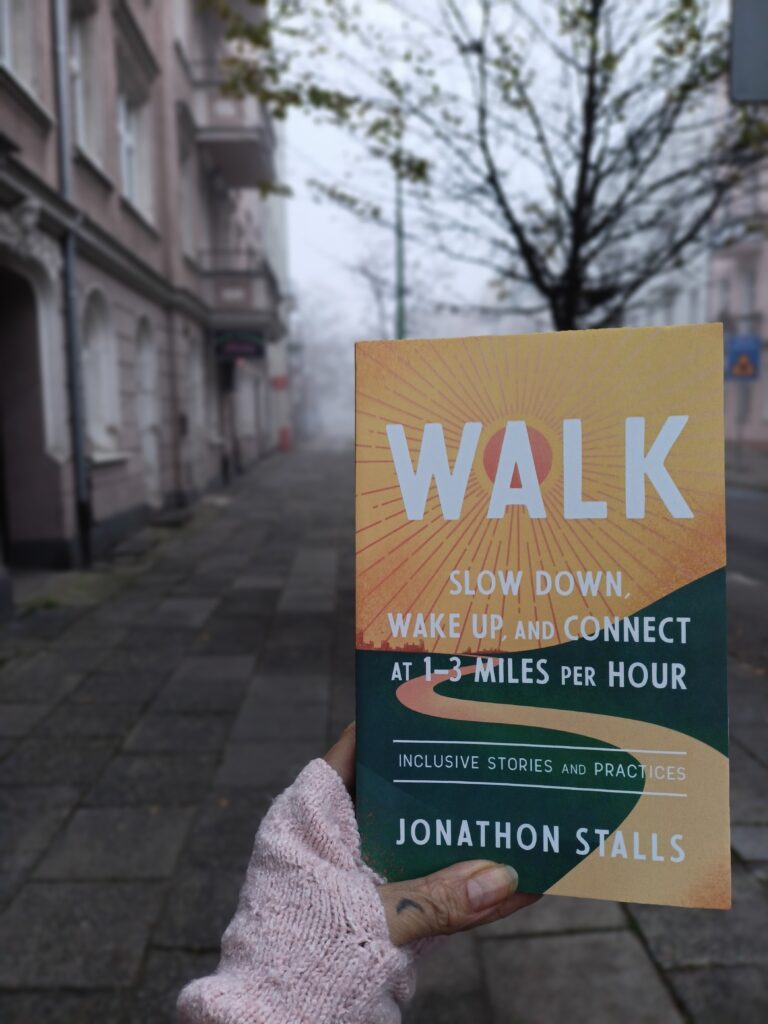
Stalls, Jonathon (2022) WALK: Slow Down, Wake Up and Connect at 1-3 Miles Per Hour. North Atlantic Books: Berkeley.
Streets, Annabel. 52 Ways to Walk, the Surprising Science of Walking for Wellness and Joy, One Week at a Time.
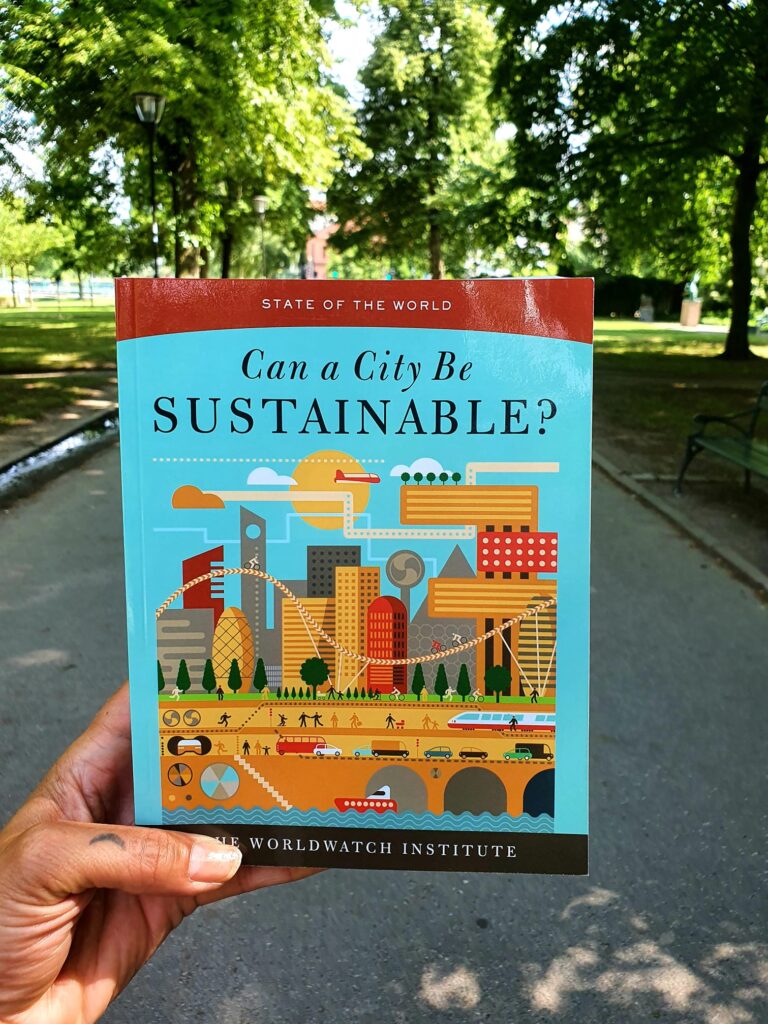
The Worldwatch Institute. Can a City be Sustainable? (State of the World). Island Press, Washington, D.C.
CHILDREN’S BOOKS

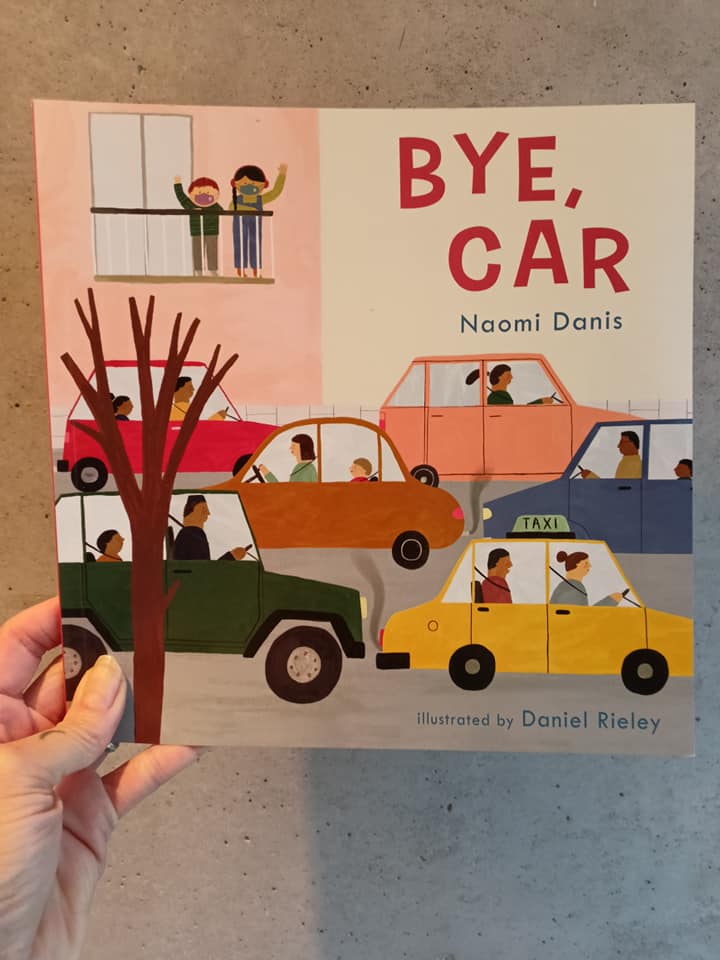
Danis, Naomi & Rieley, Daniel (2021). Bye Car. Child’s Play International Ltd. Wiltshire.
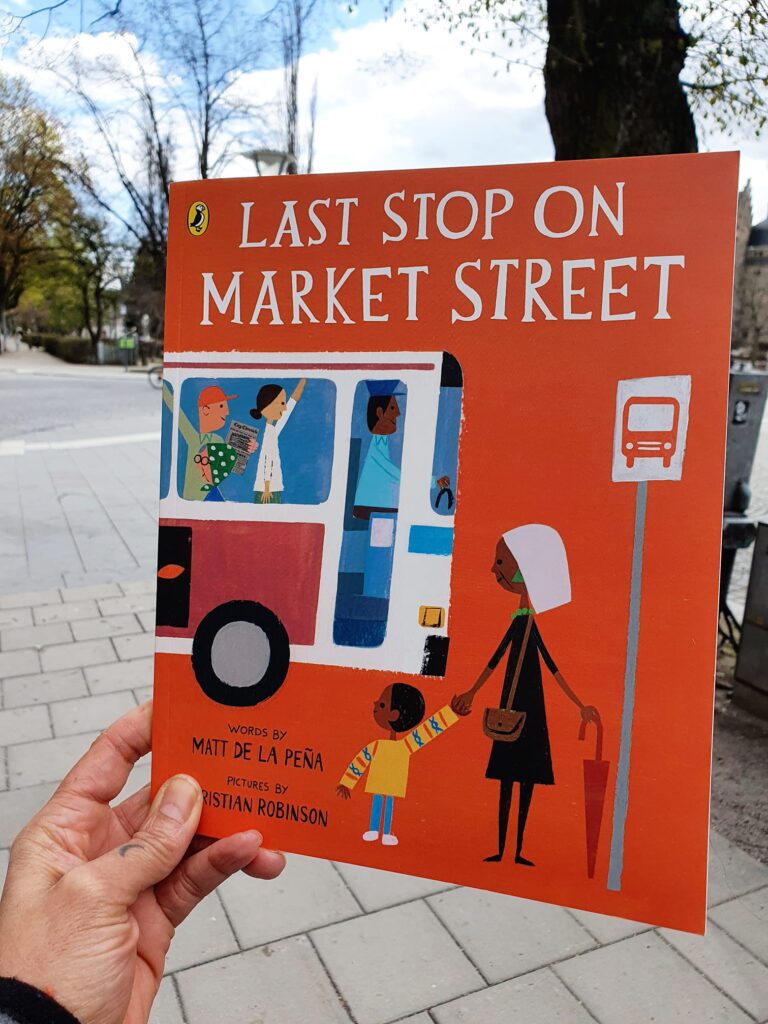
de la Peña, Matt & Robinson, Christian (2015). Last Stop on Market Street. G.P. Putnam’s Sons Books for Young Readers: New York City.
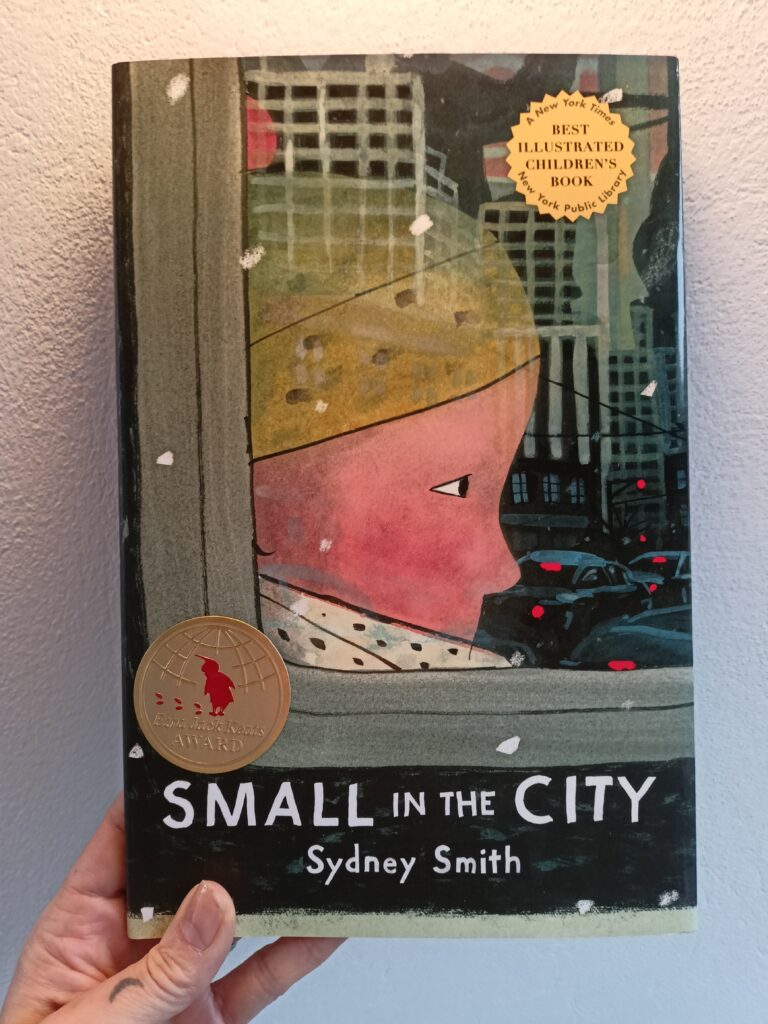
Smith, Sydney (2019). Small in the City. Groundwood Books: Toronto.
